Three heavy thunderstorms hit us and three times we have good luck with just-in-time bus-stop shelters on the 70 kilometers ride from Bradeni to Sibiu. We move on the day after on the very busy E68. The new highway is not yet finished, and so the entire heavy traffic thunders on this roads through the small villages. Children play on the foot-walk. No speed-breakers.
In Saliste we find a neat campground (www.salisteanca.com) a few kilometers away from the highway and wait for better weather to cross the Carpathians. A stork nest sits on the entrance gate, and we are allowed to plunder the big cherry tree. David and Nicole, a German couple with a 4x4 camper are here as well. They just crossed the newly paved Transalpina in fog and rain. We plan to do the same road in a three day ride, and start with an easy 30 kilometer day from Saliste up to the village of Jina at almost 1000 elevation meters. Sheep flocks and horses grass on the meadows on the hilltops above the forests. In Jina, we lodge at the only guest house. There is small museum run by an old woman, with a nice collection of traditional clothes such as thick white sheep leather jackets and white dresses with excessive colorful embroideries. The cherries in the backyard are sweet. A five liter bowl of soup and sausage and mustard for dessert.
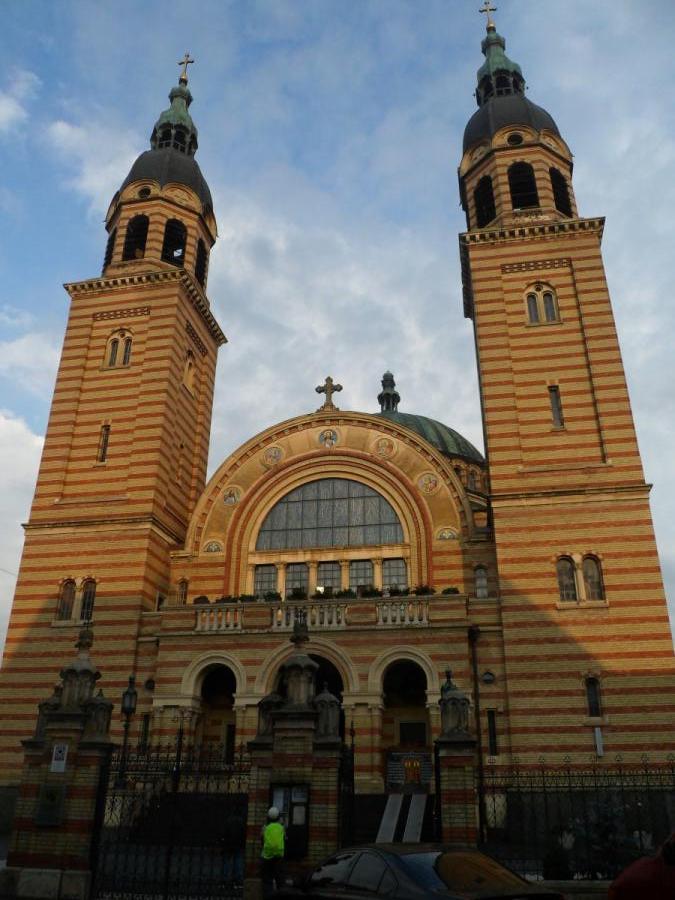
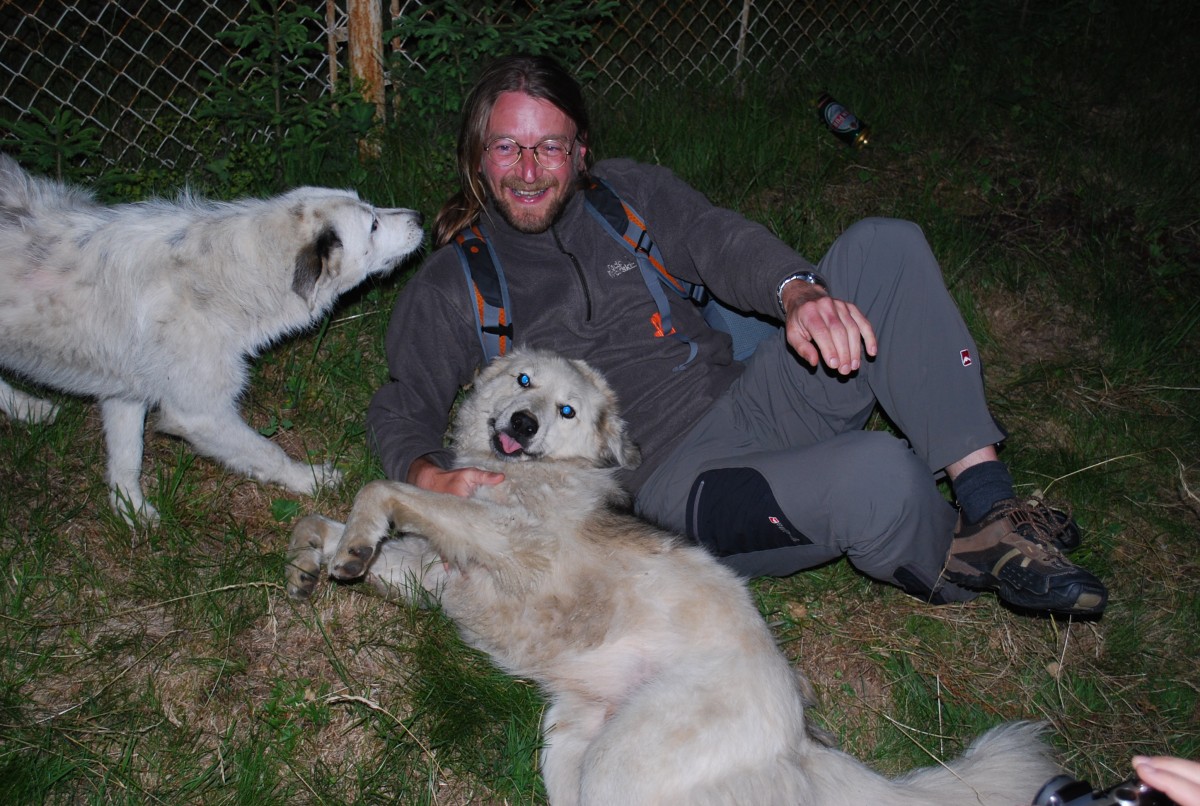
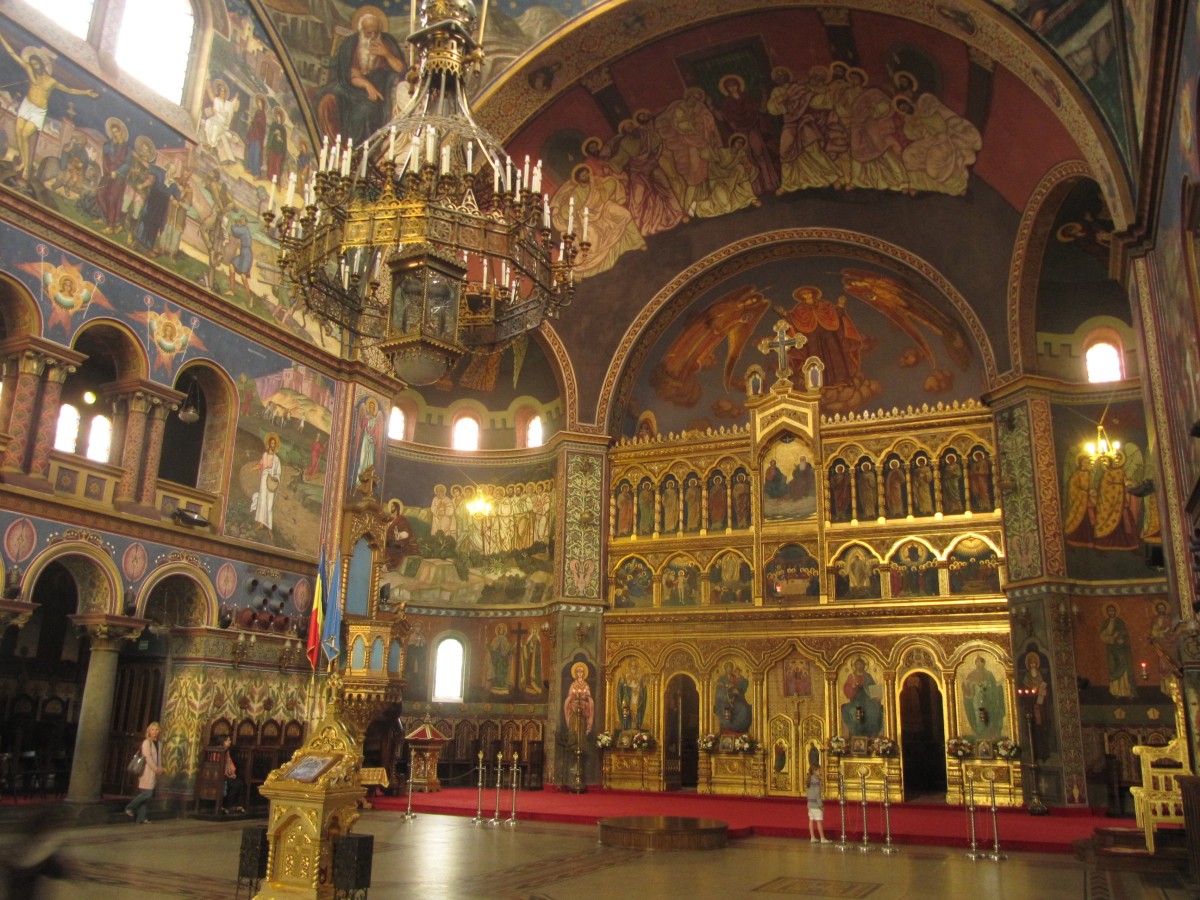
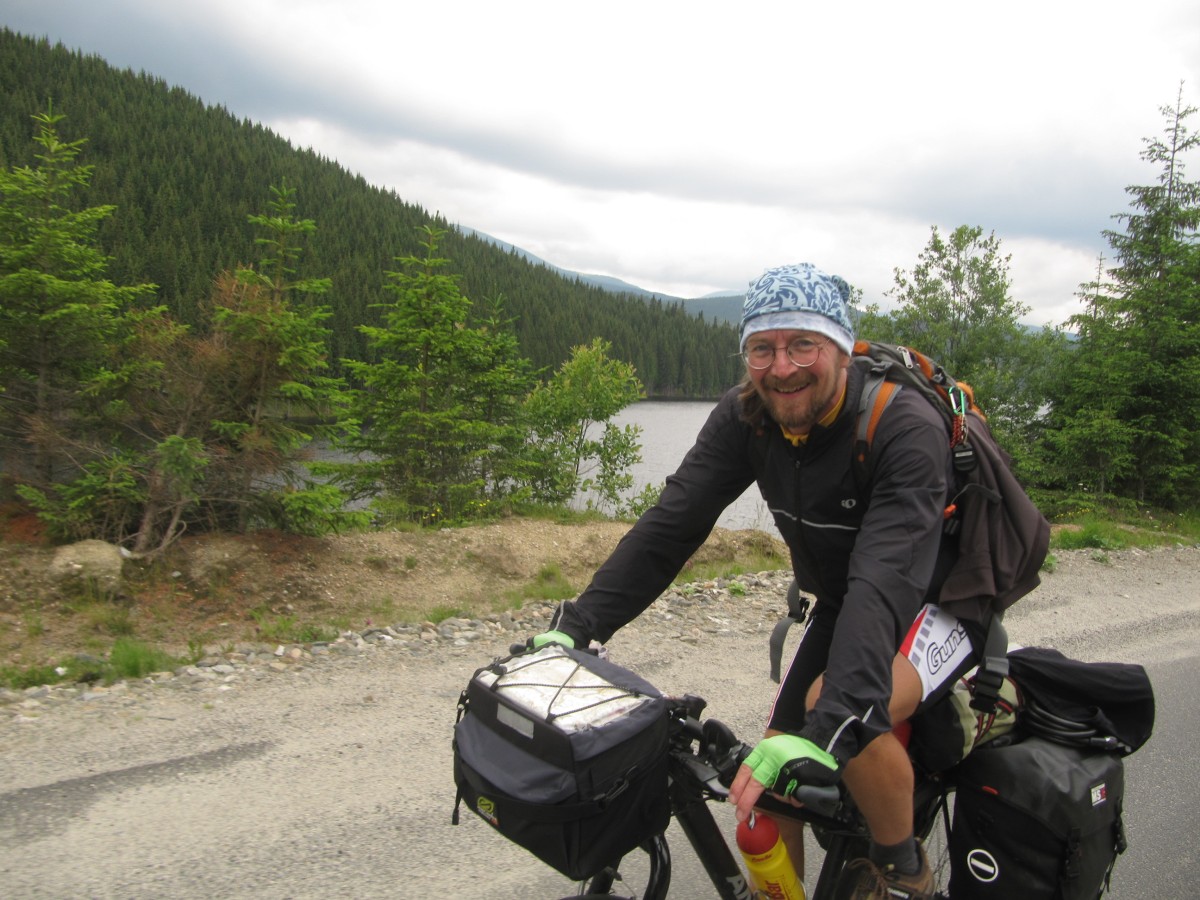
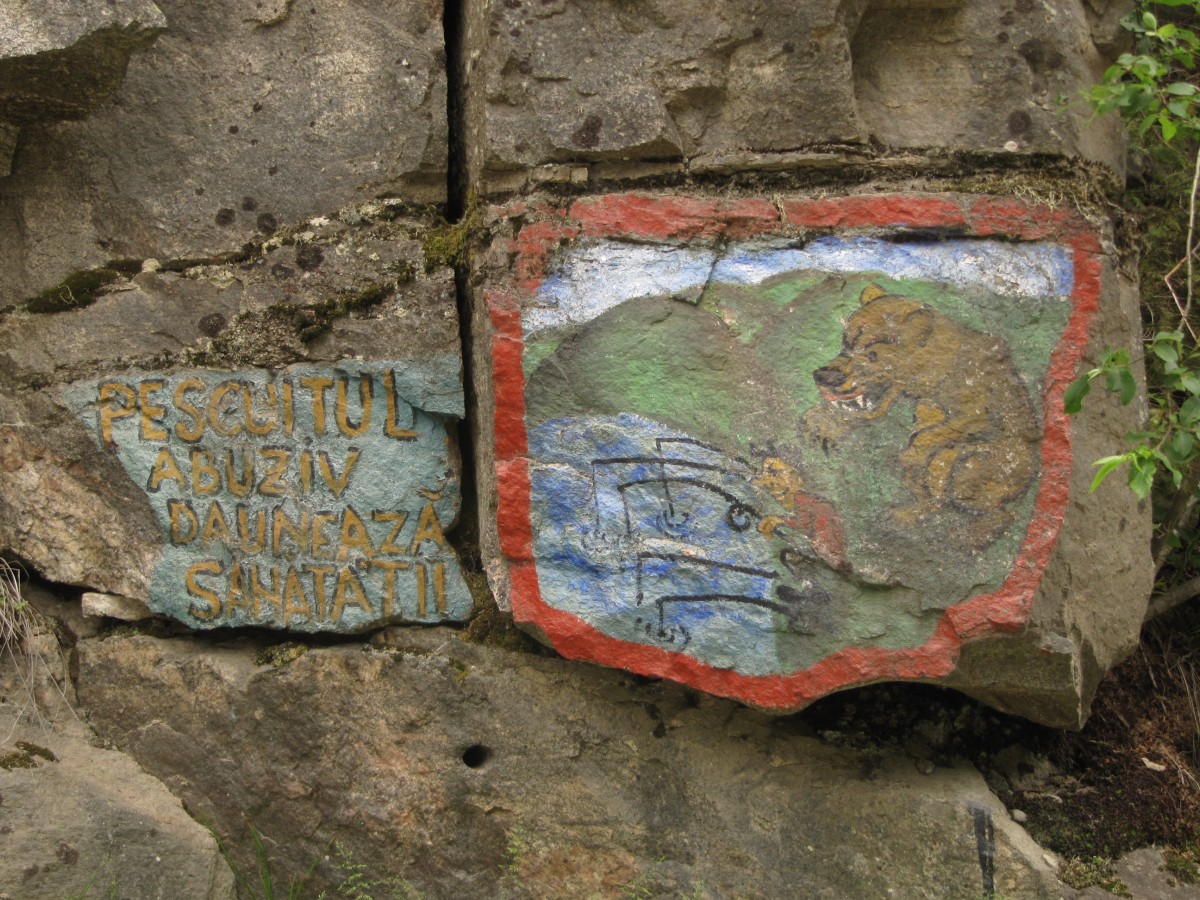
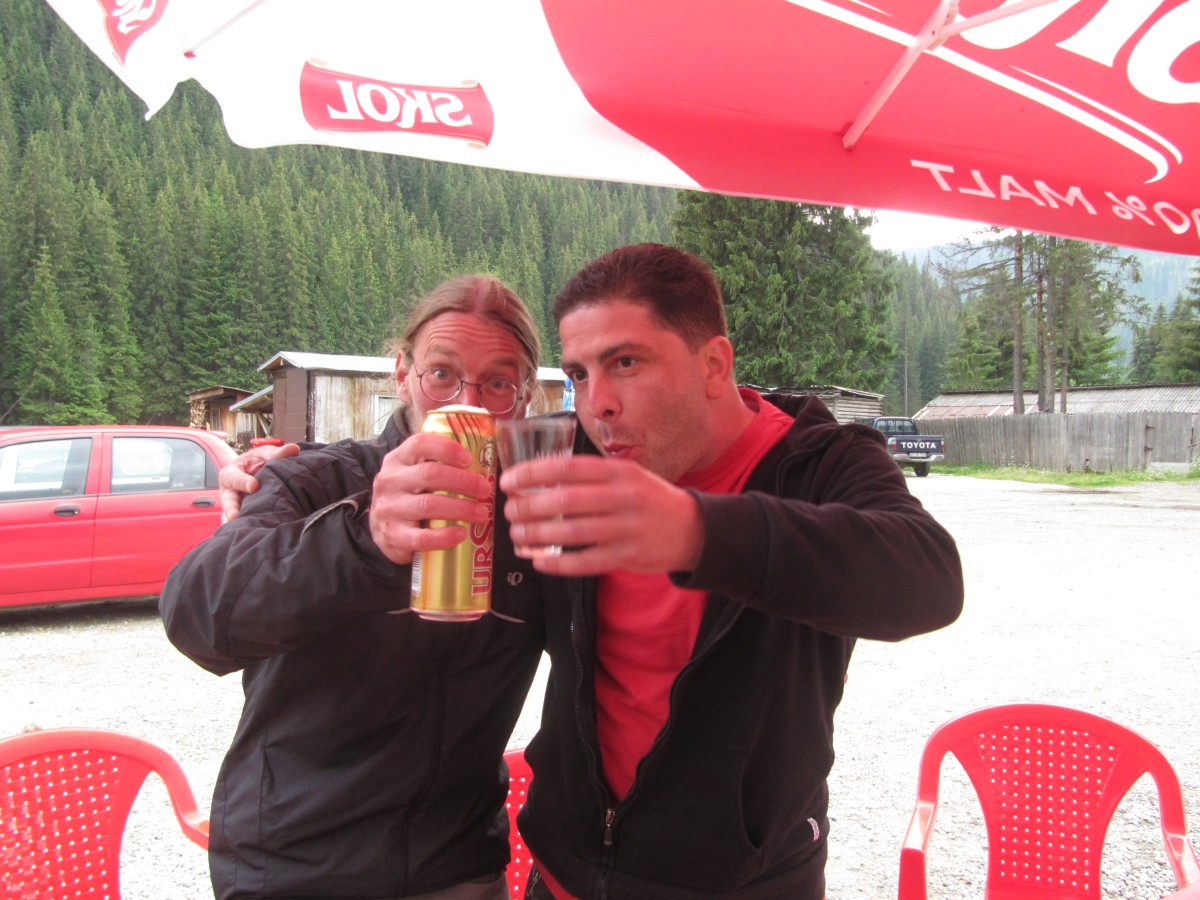
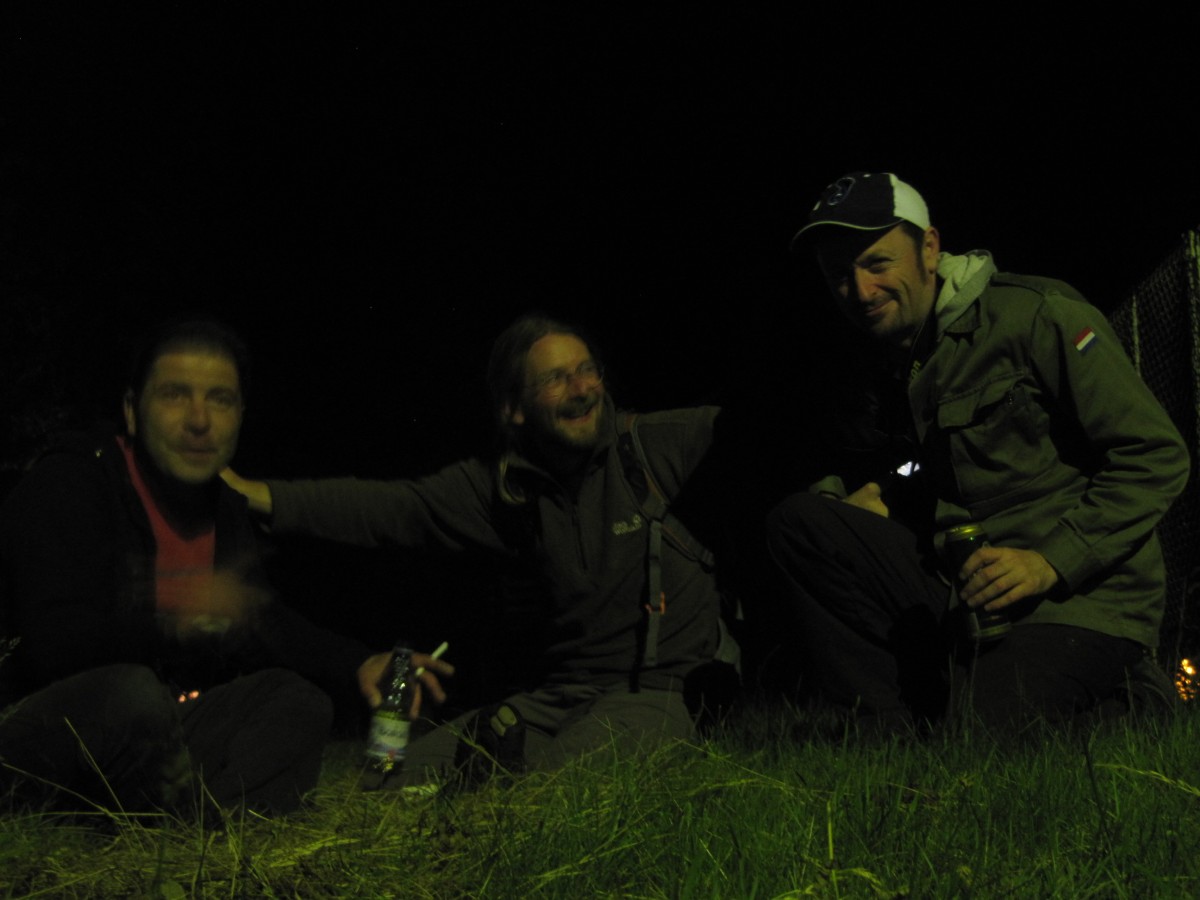
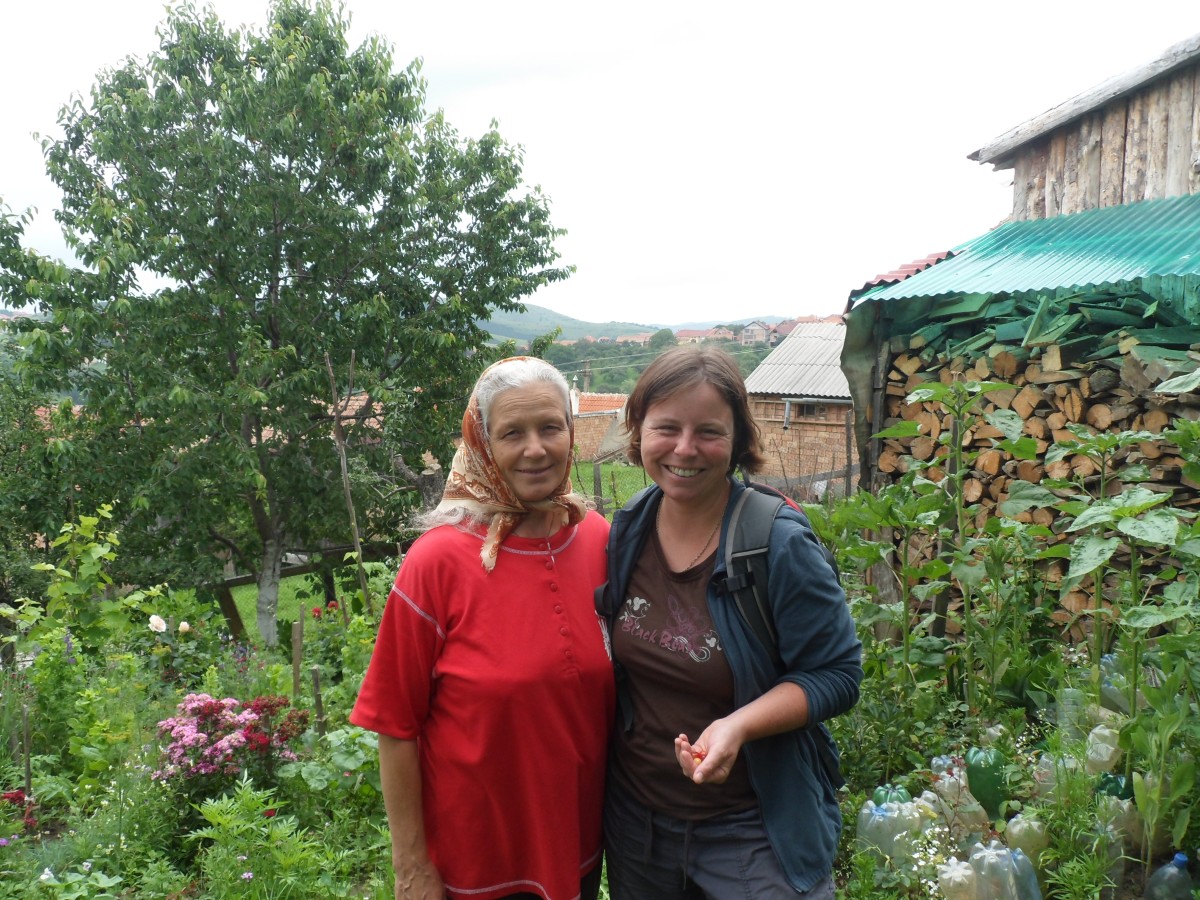
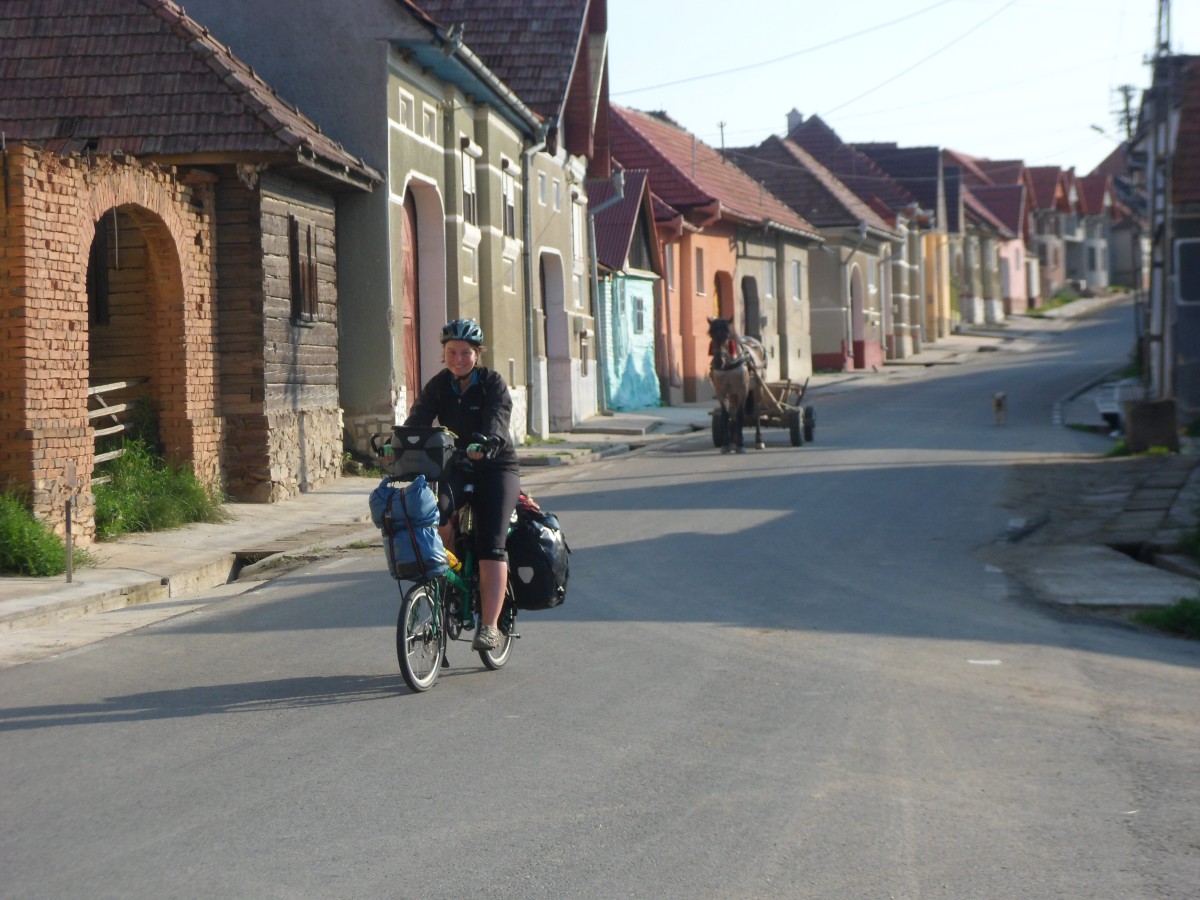
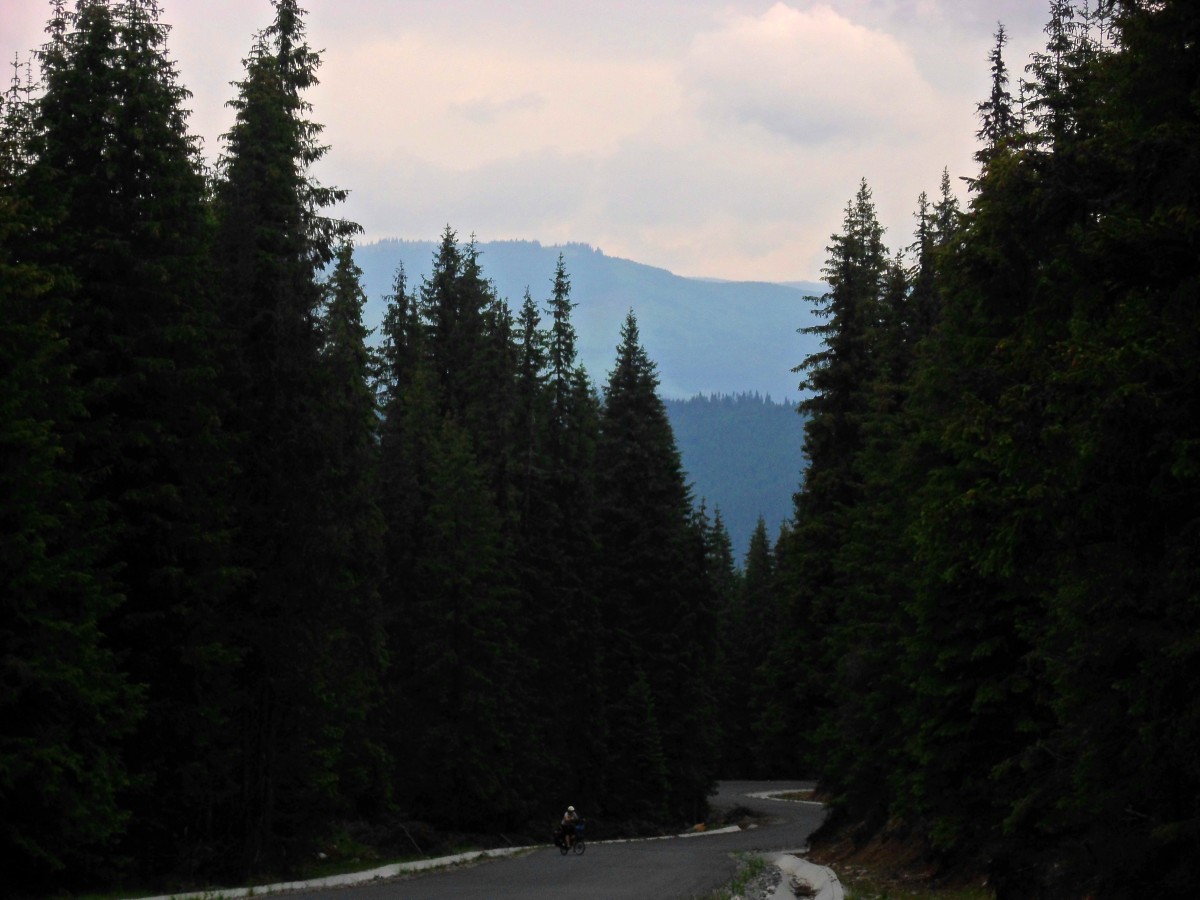
The next day starts with great switchbacks down to Sugag, and then 40 kilometers up the small valley, past two scenic water reservoirs. Tourist hotels are in construction here, and lots of wood trucks pass by. The outlook of big business probably payed the pavement. The remaining 10 kilometers until the peak of the Tartarau pass are either very steep climb, or our legs are very weak already. No blueberries. 1700 meters above sea level and still thick fir forest, not much to see. We rest in a small cottage in Obarsia Lotrului, make friends with Bogdan and Daniel from Bukarest. They both speak fluent English and French, for both lived in Quebec for years. Bogdan invites us to Palinka, the local spirit and the cheese and sausages they bought on their ride over the Transalpina. A little later we start to drink Tuica (another home-made spirit) from a PET bottle. Hearty Romanian hospitality, campfires and a lot of laughters. I end up with a severe headache the next morning.
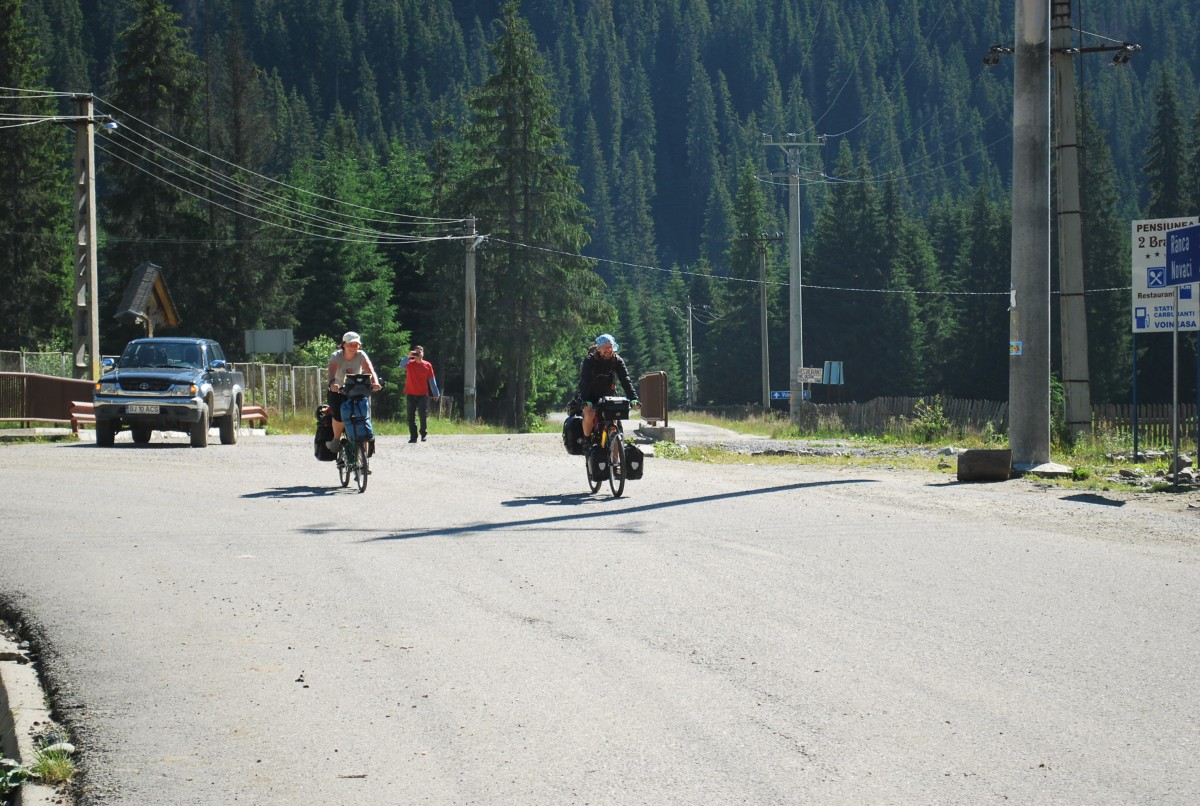

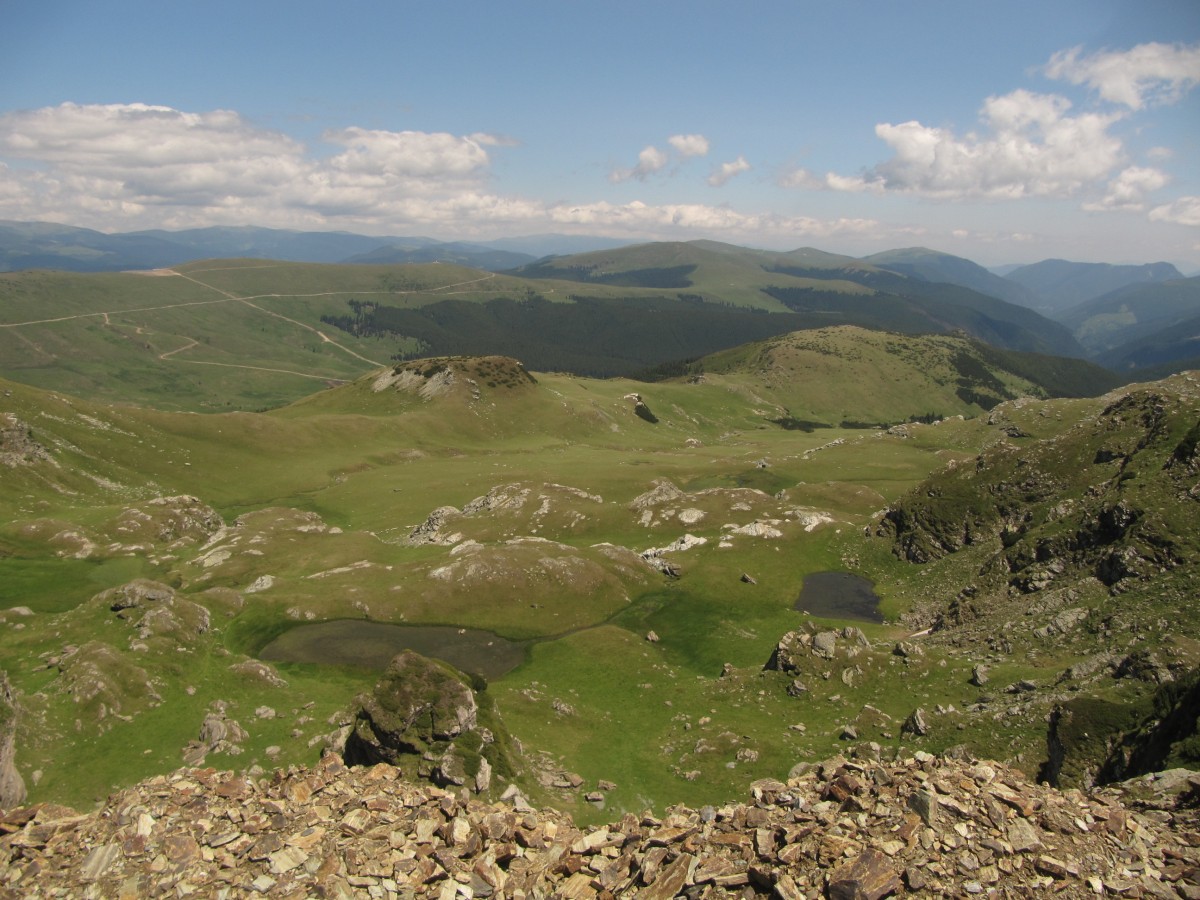
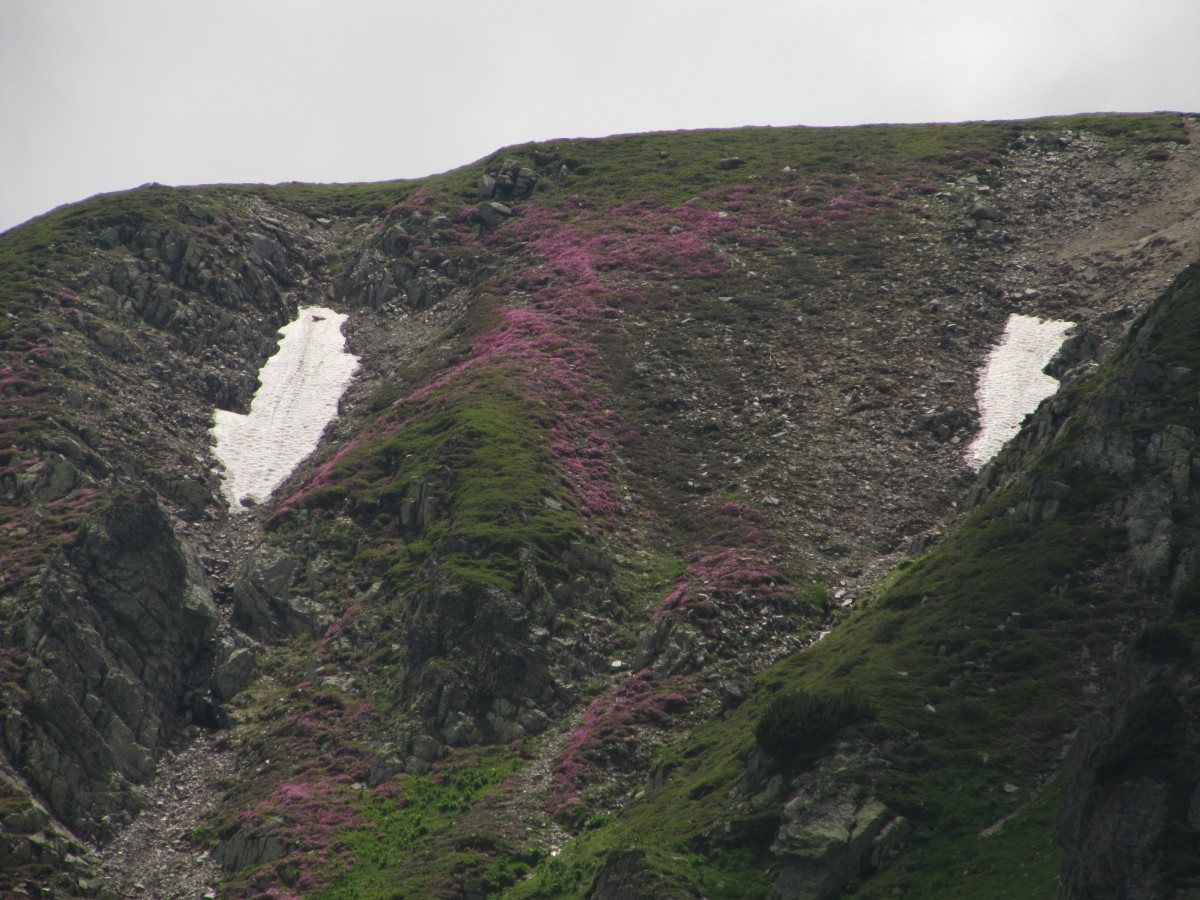
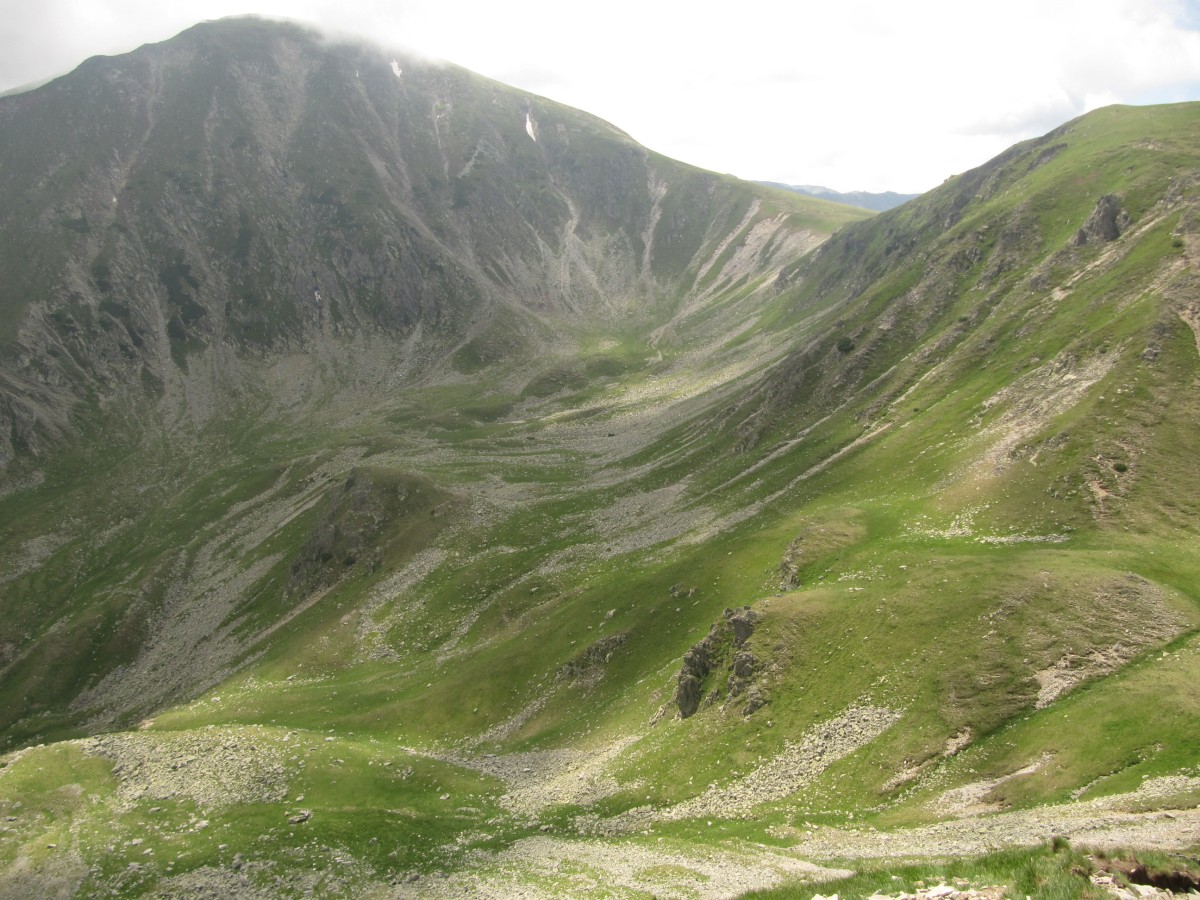
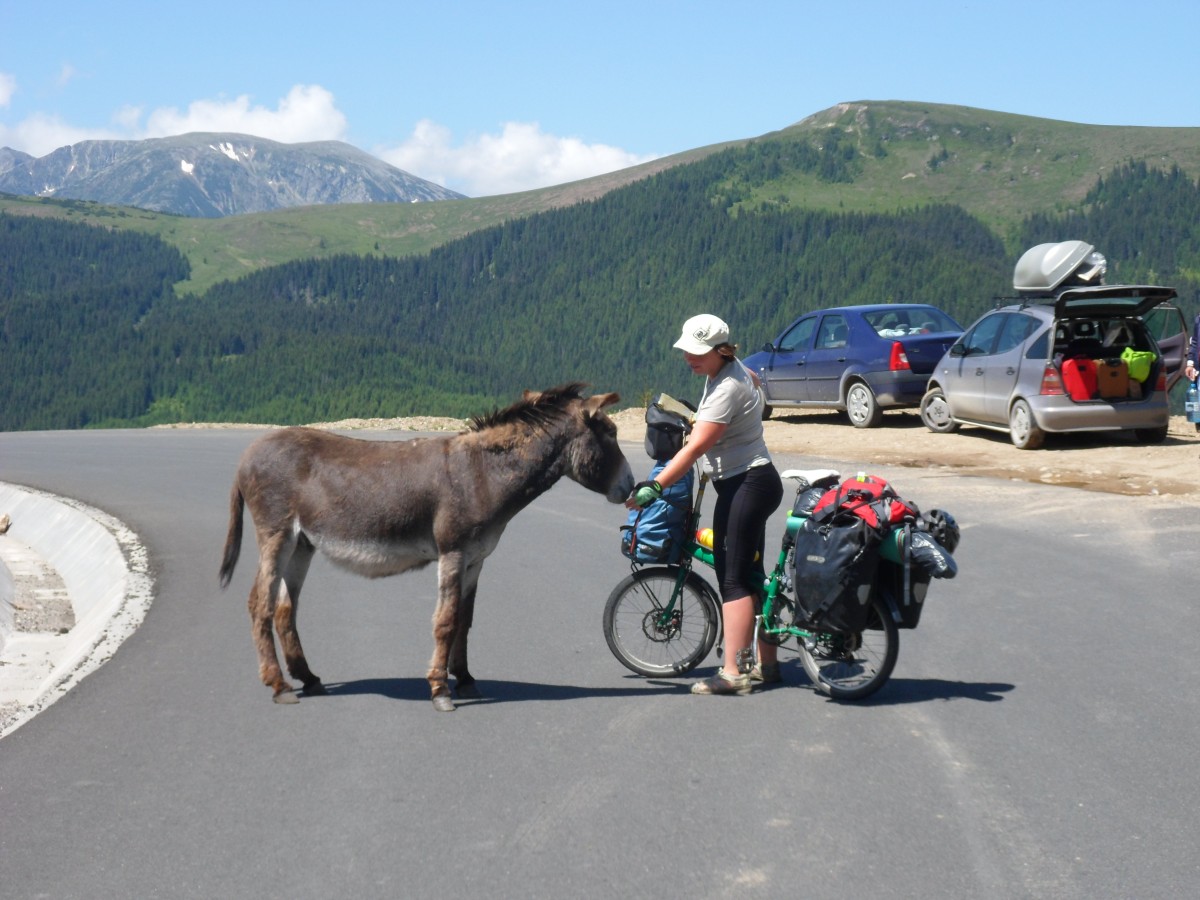
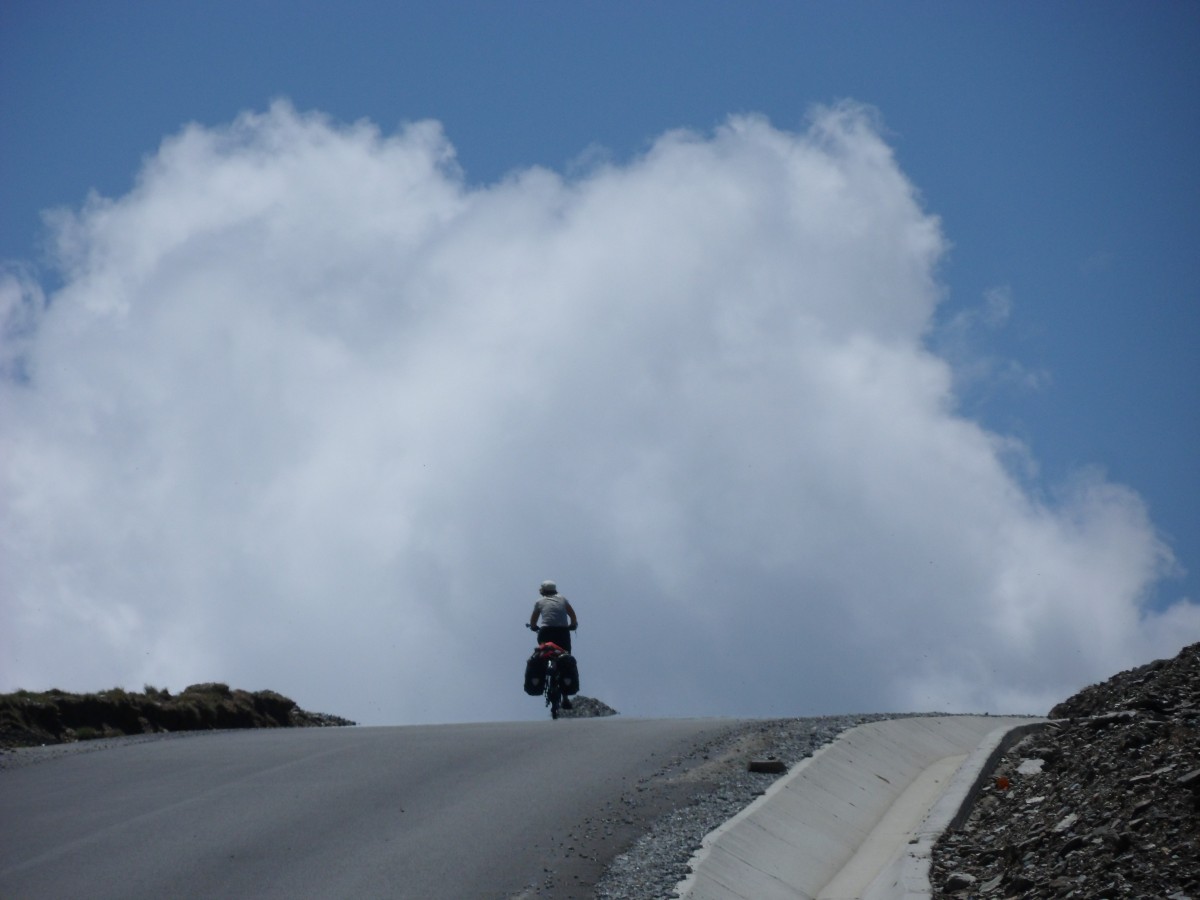
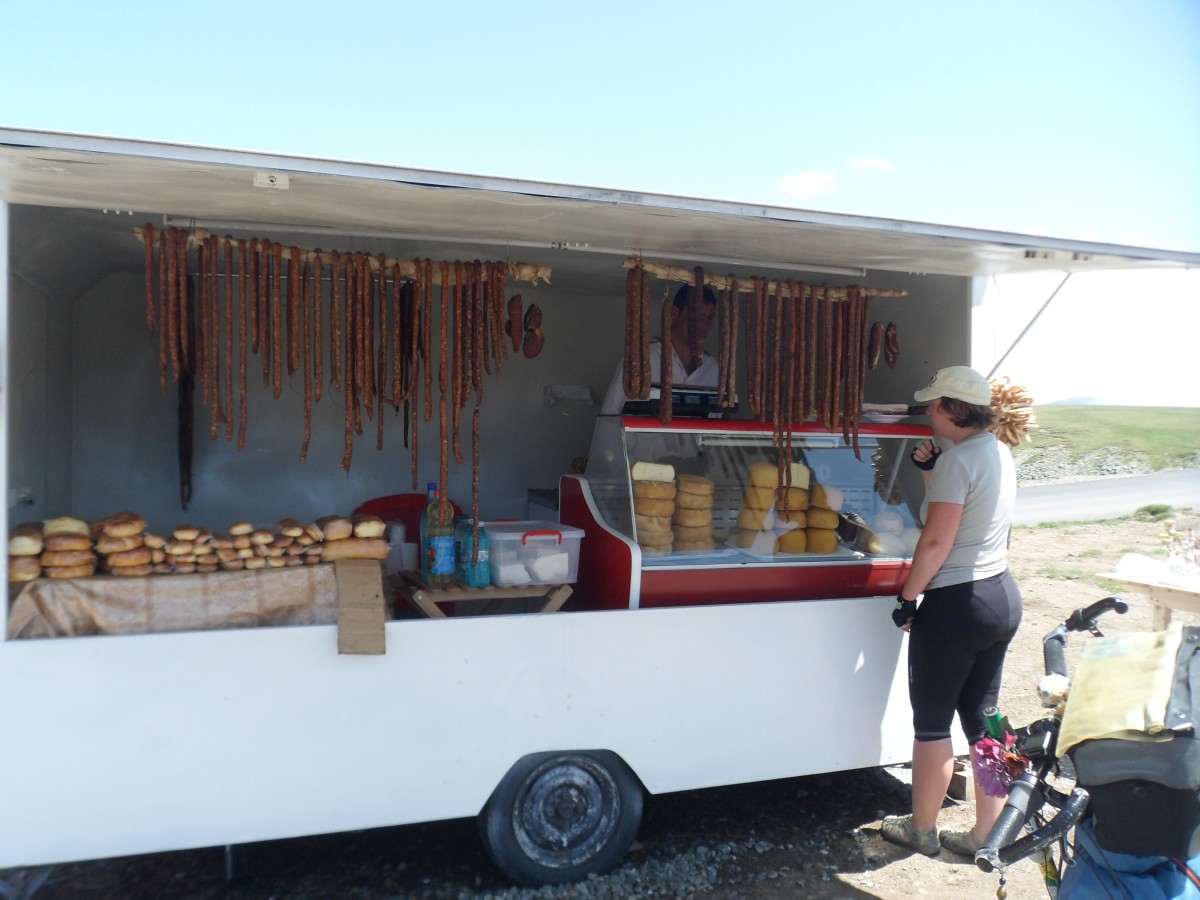
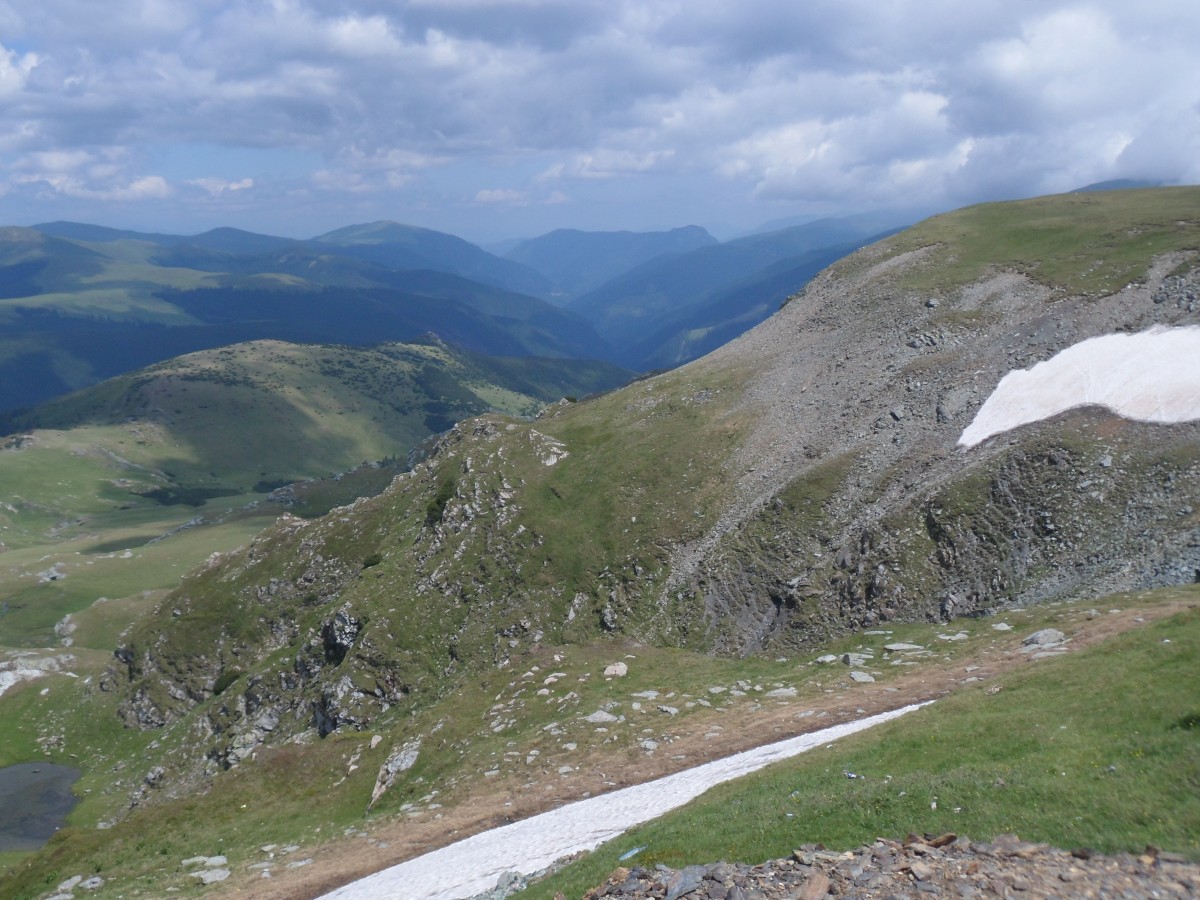
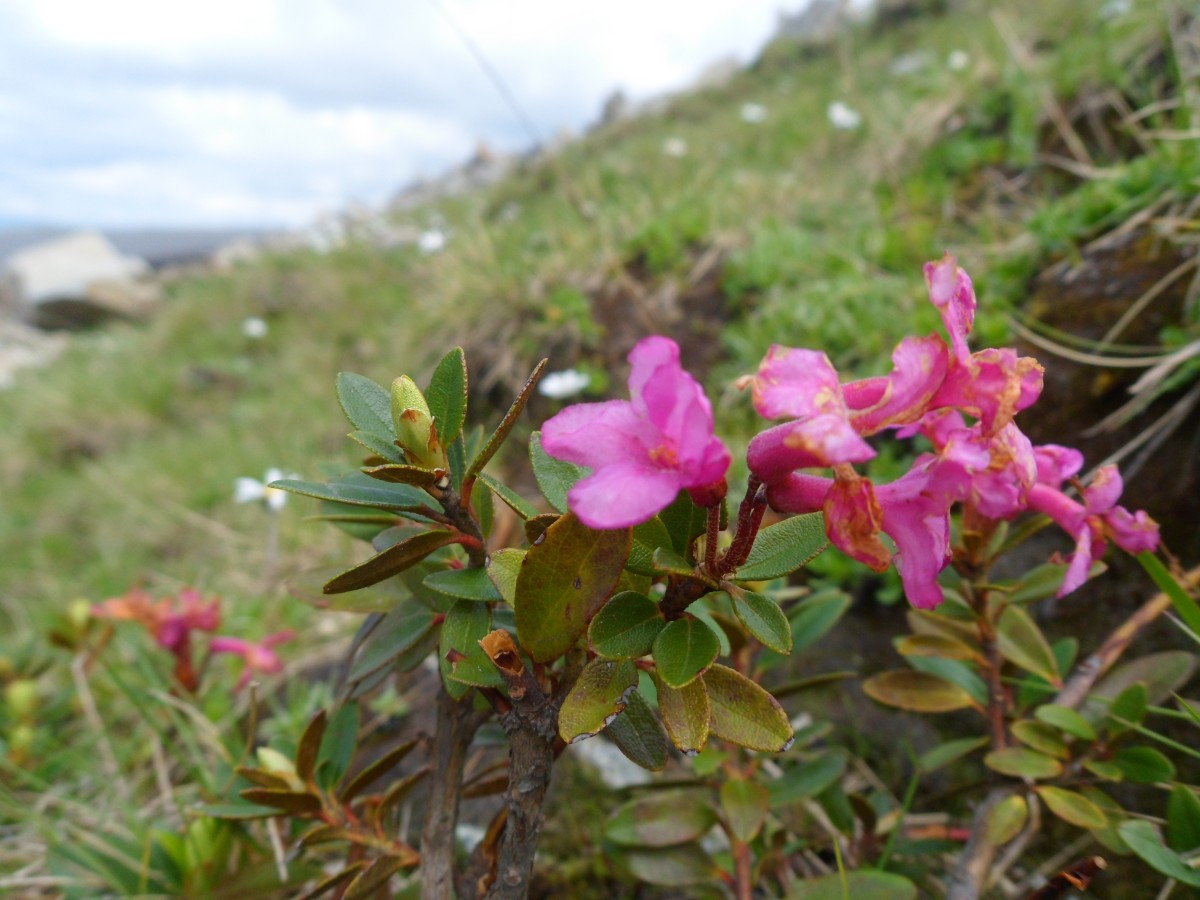
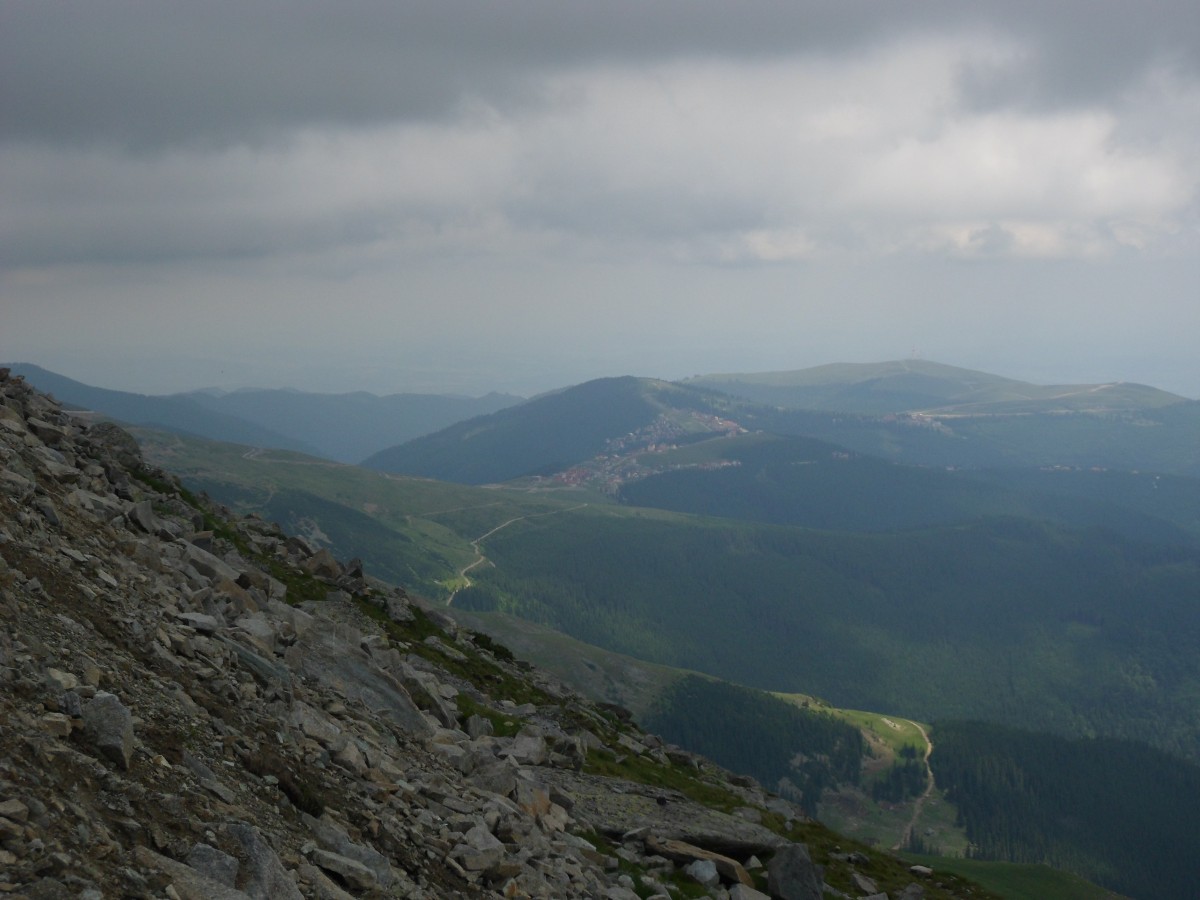
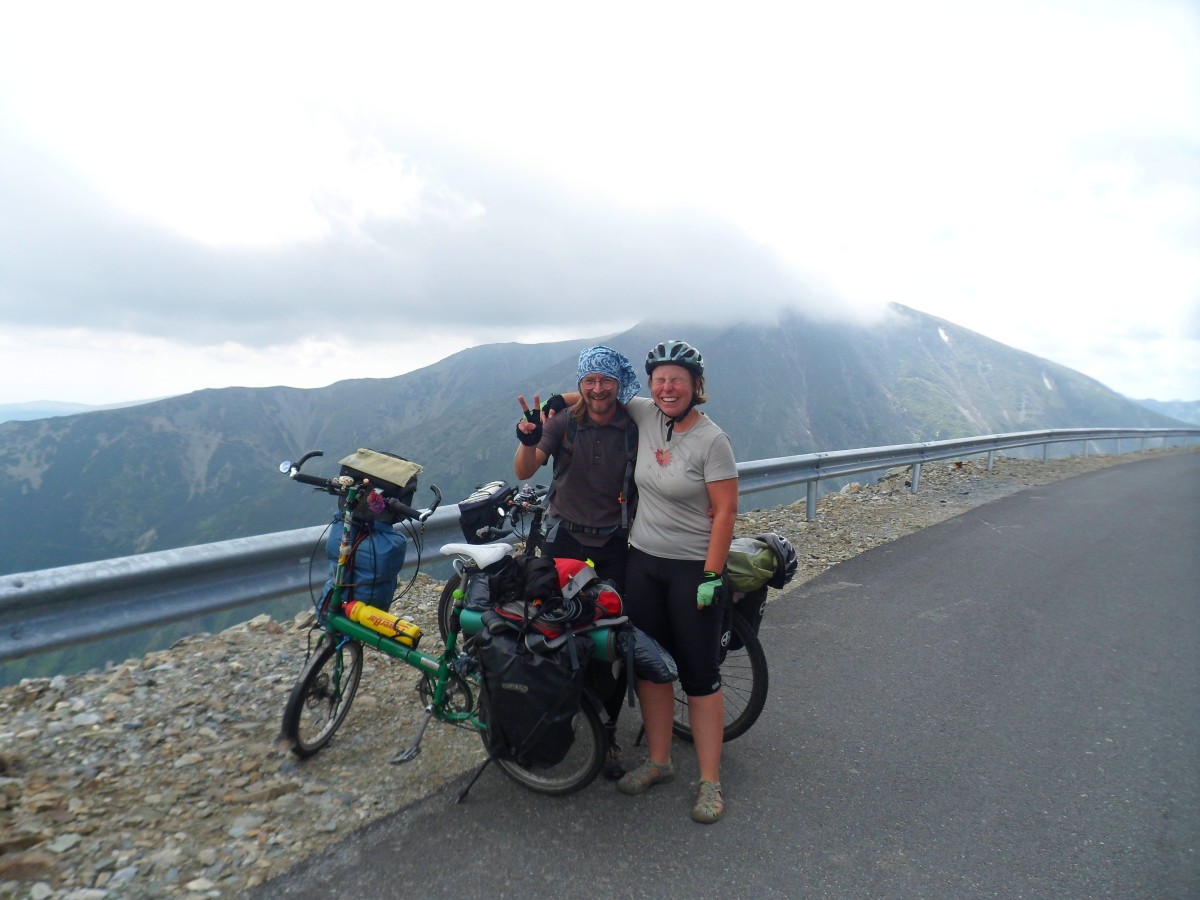
On the Transalpina
However – the sun is shining - Kathrin and I decide to tackle the Urdele Pass. Daniel sponsors an apple, a banana and a power bar for each of us, which is somehow more helpful than Bogdans contribution. We see patches of snow on distant mountains. Steep switchbacks through the woods, then we reach the tree frontier. The donkeys up here love cyclists salty sweaty hands, and the many tourists with their cars and motorbikes celebrate us like rock stars. We climb on and on, with aching legs. In distant valleys it is hard to determine between the white rocks and the sheep flocks, and the snow fields get closer and closer. We reach the first peak. Makeshift shops sell souvenirs, and much more important for us - home made cheese and sausages. A feast with the bread we carry since Jina.
Blue sky, great views. Patches of snow and violet alp roses between the rocks. A few kilometers down, then up again to the actual Urdele pass at 2140 meters above sea level. We can see down South into the hilly Walachei now, and spot the hotels of Ranca not far away. Three days with more than 3000 elevation meters with all equipment – well done Kathrin and Freddy and Mono (which was baptized with snow on the event).
Old gnarled beechwood and oak trees on the meadows, fantastic outlooks South – it is a very pleasant ride down to Novaci. From there, it is a lot of ups and downs over the foothills of the Carpathian mountains to Horezu. Pretty jaded we put our tent on a campground with mighty oak trees beside the road. A dog with one and a half ears takes its opportunity to fetch our sausage during our Yoga session. She became a big fan of us with that!
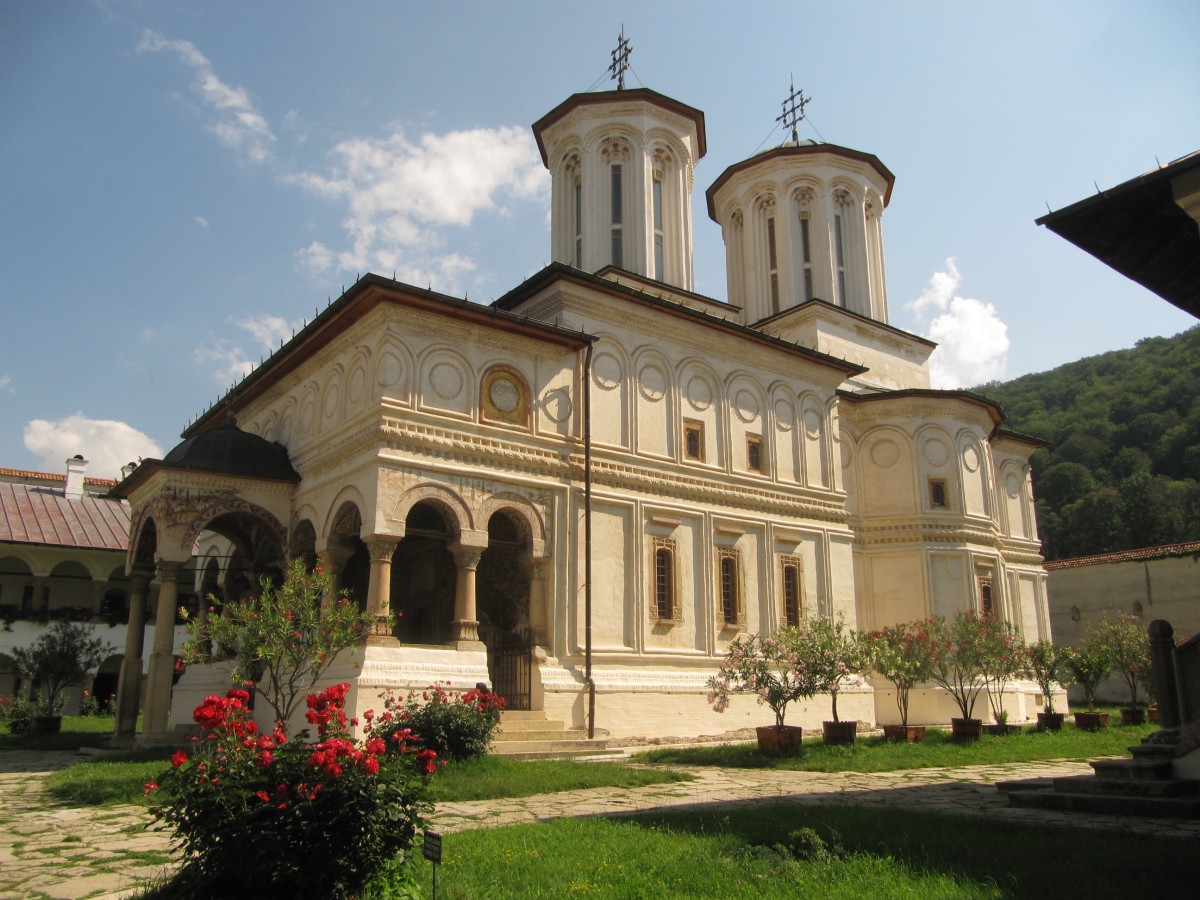
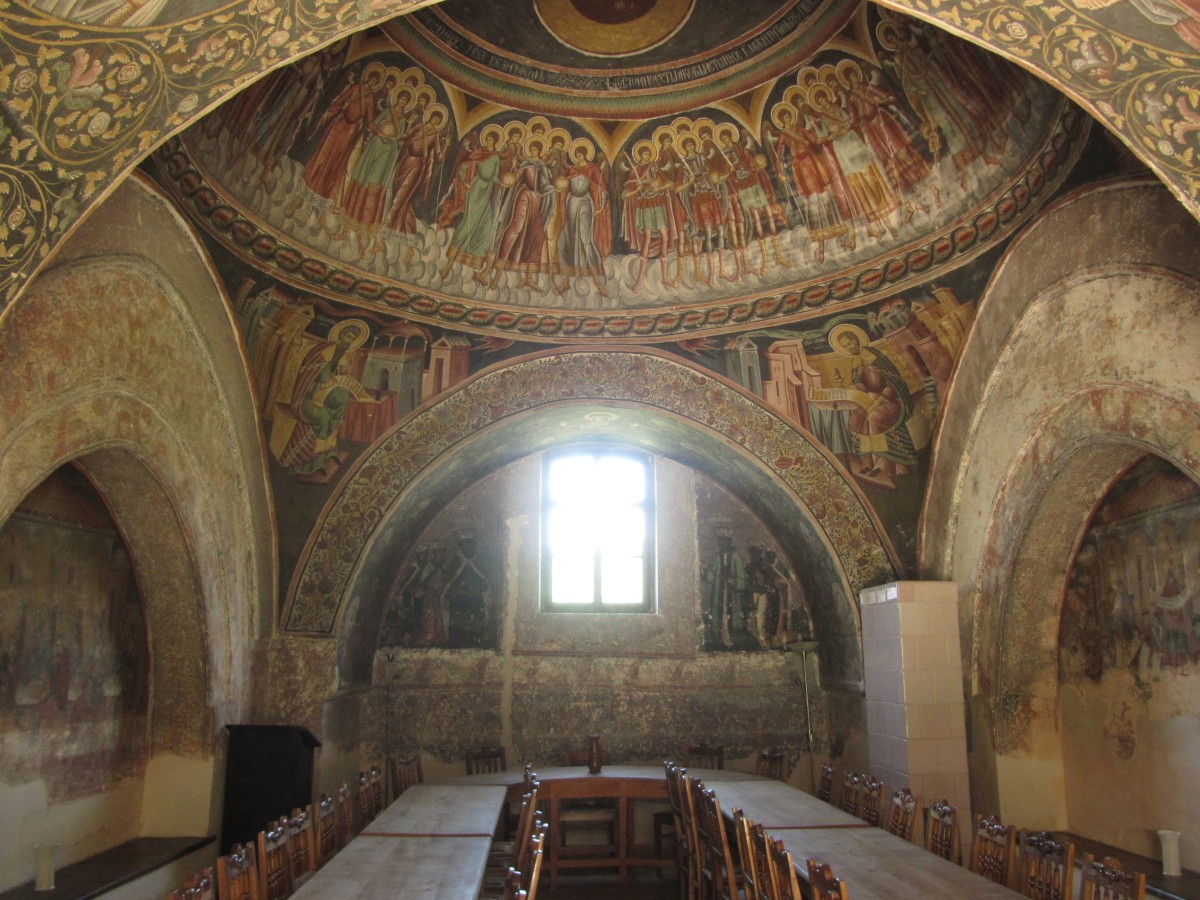
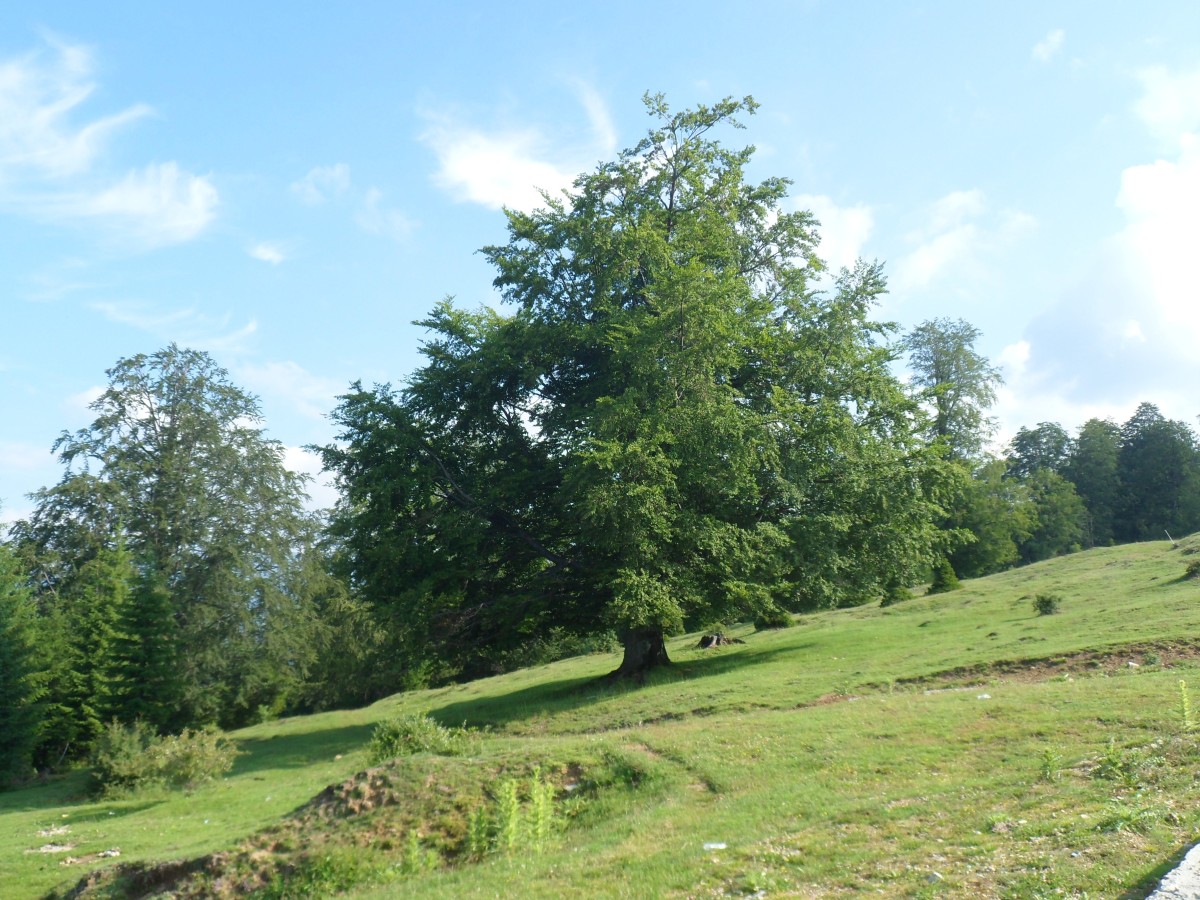
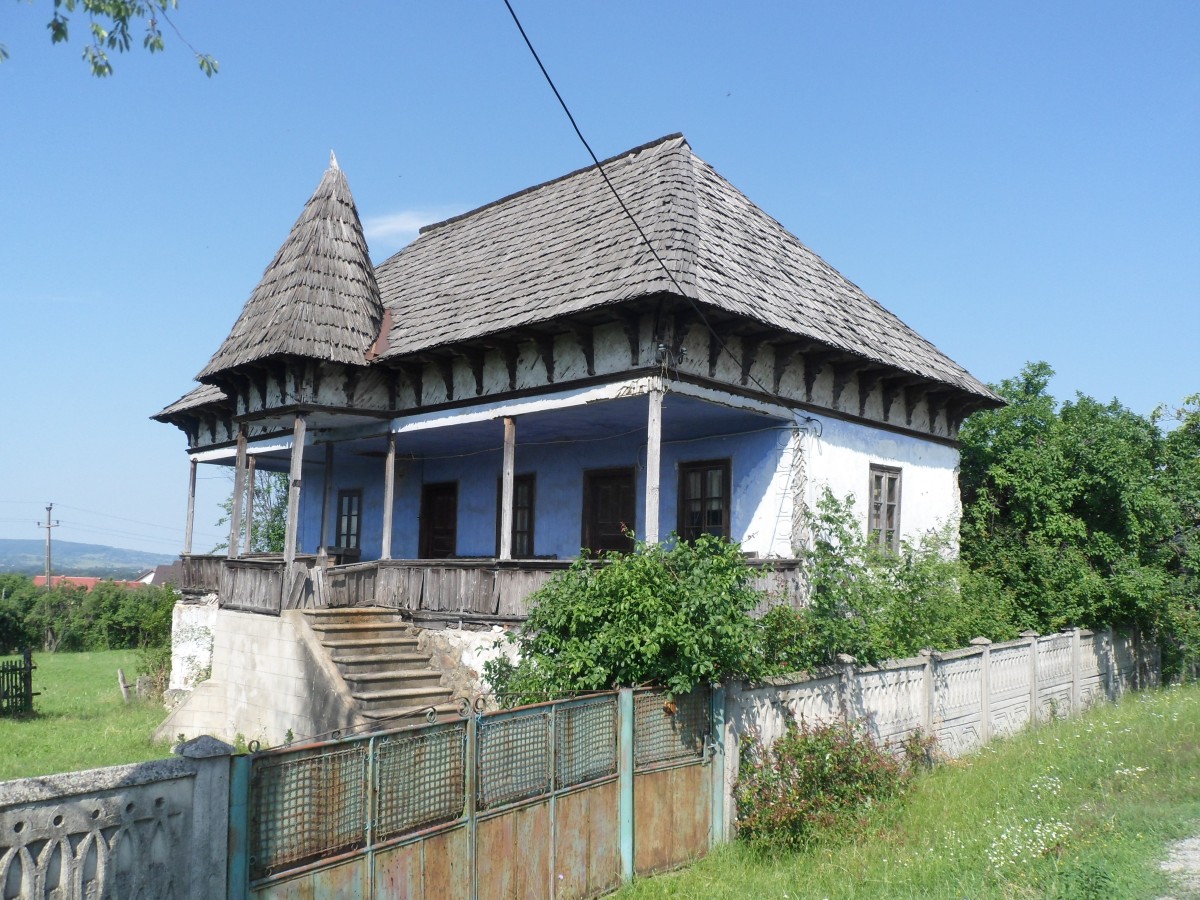
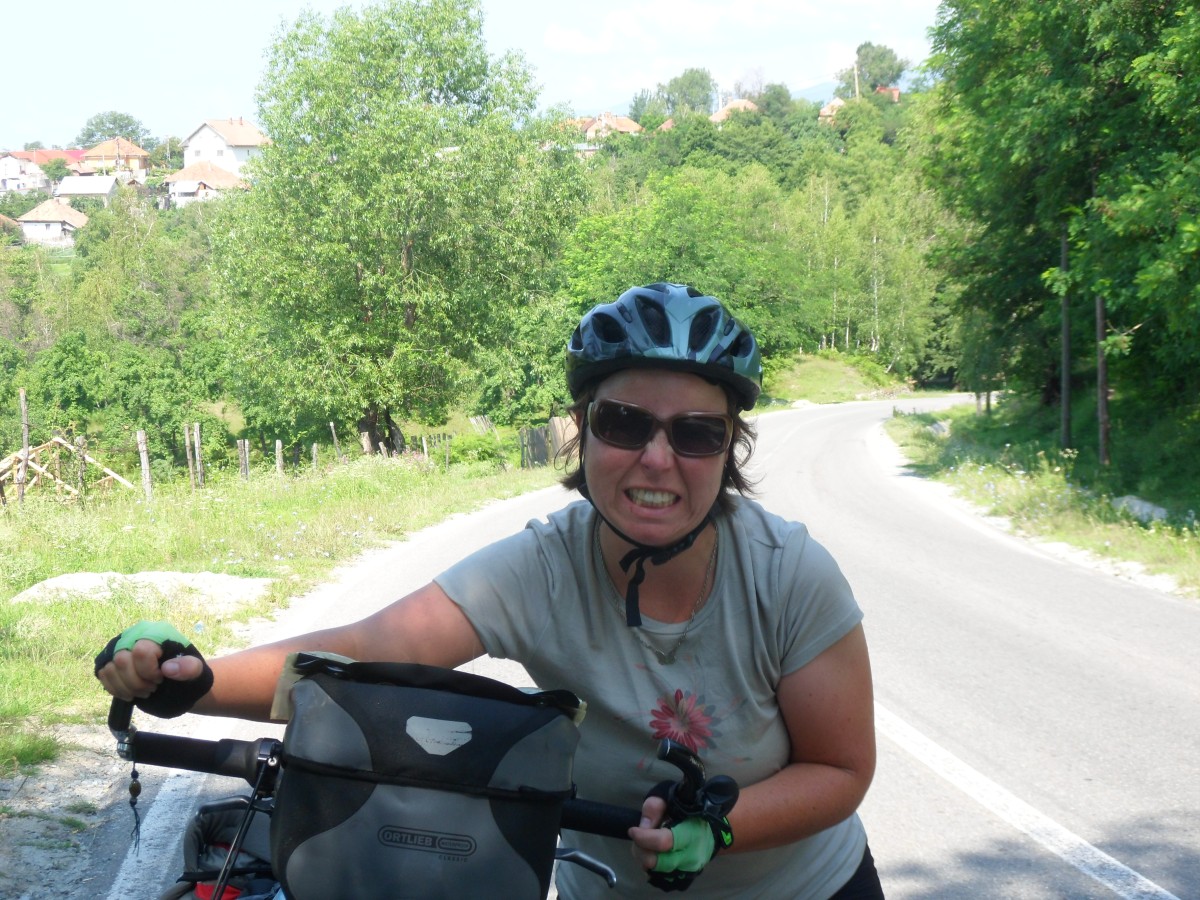
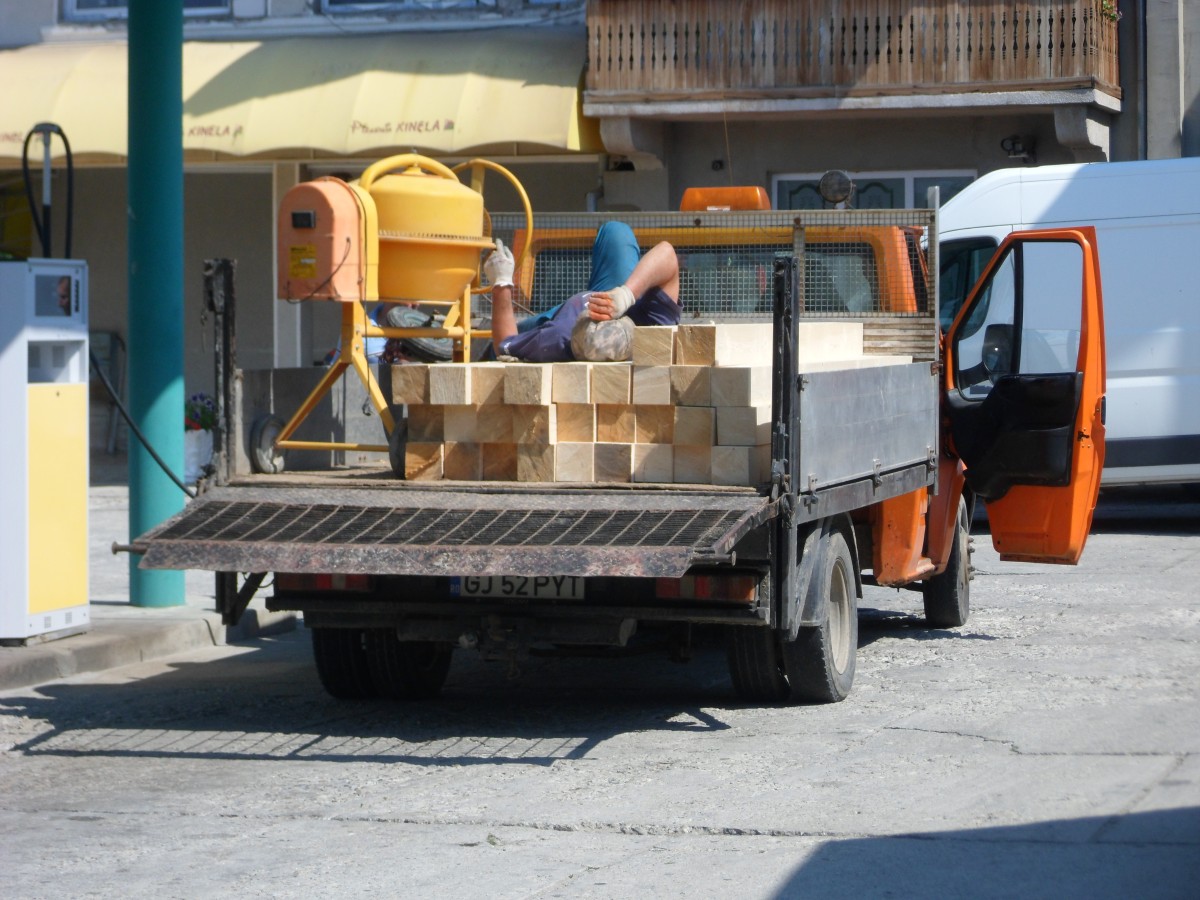
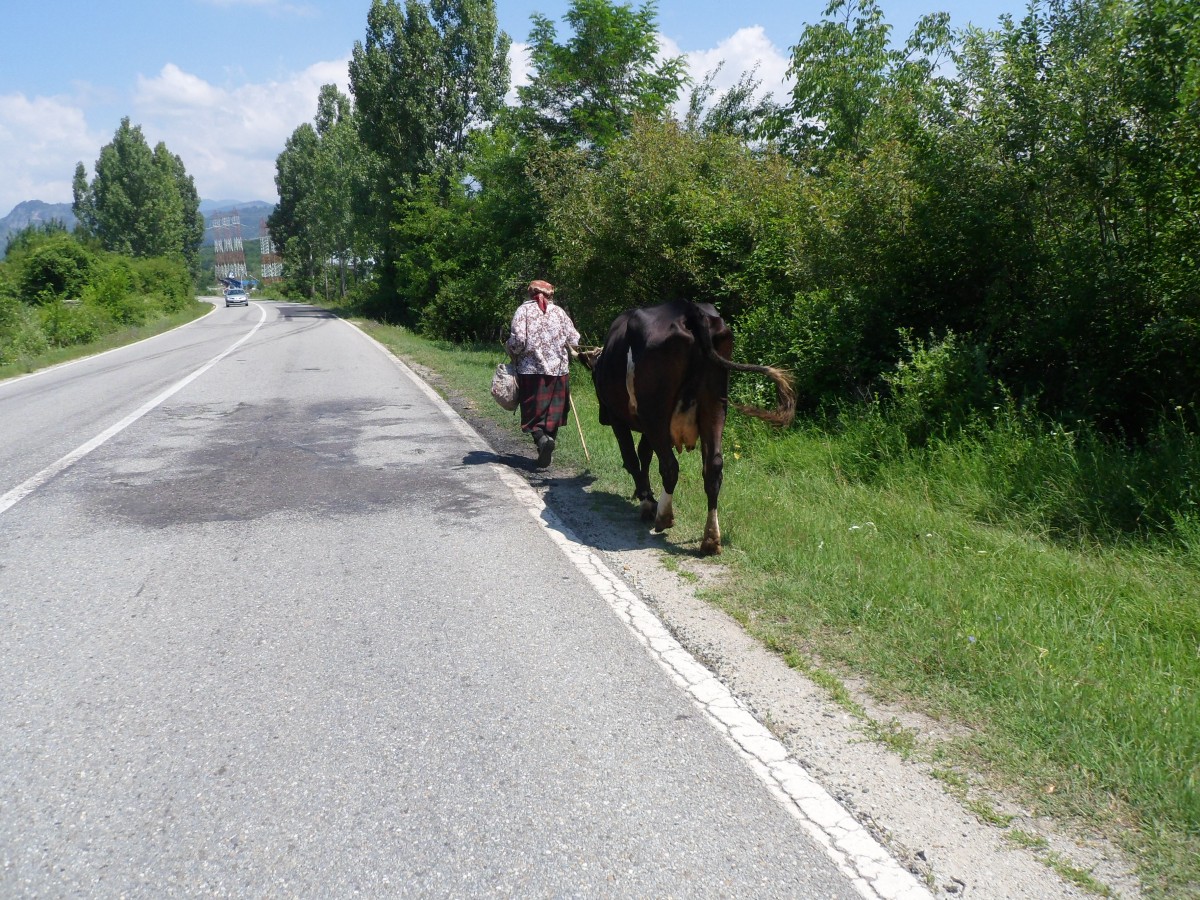
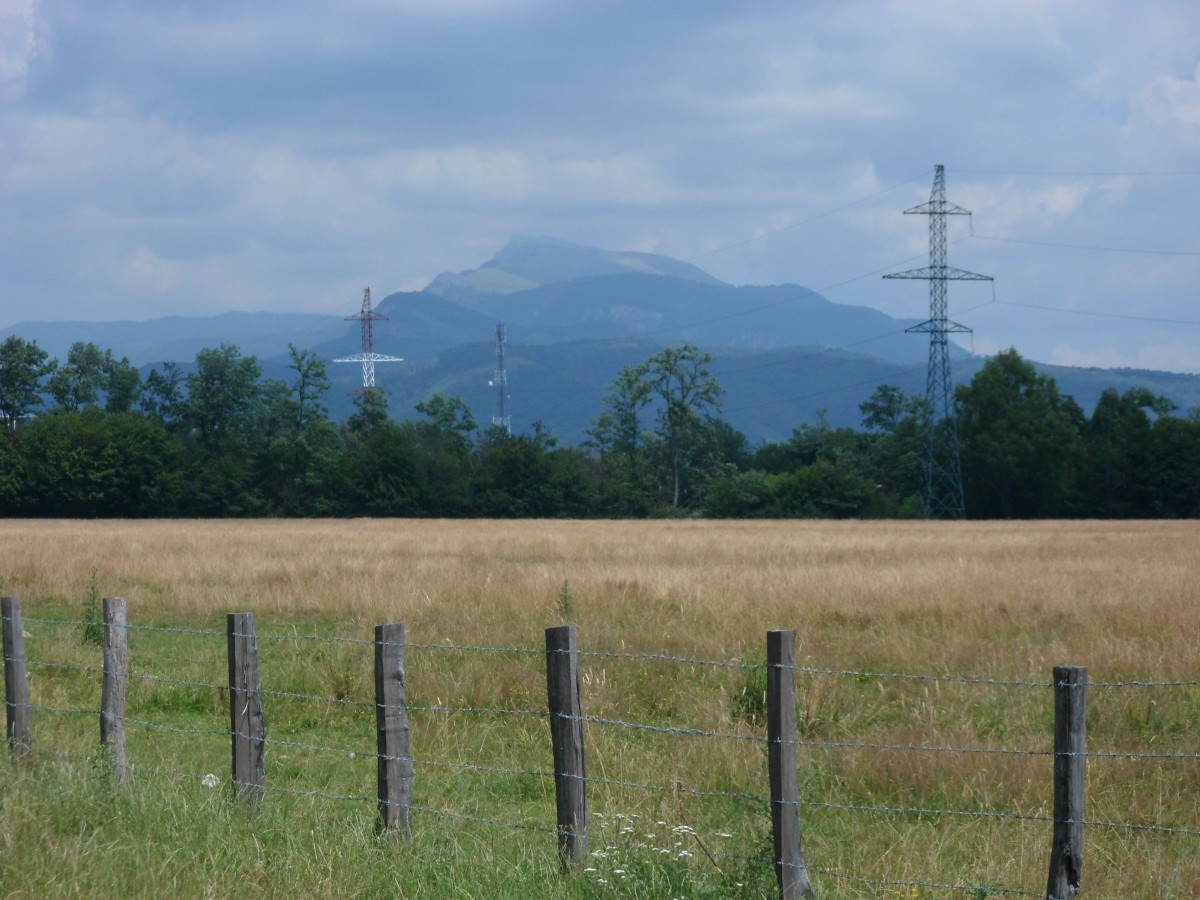
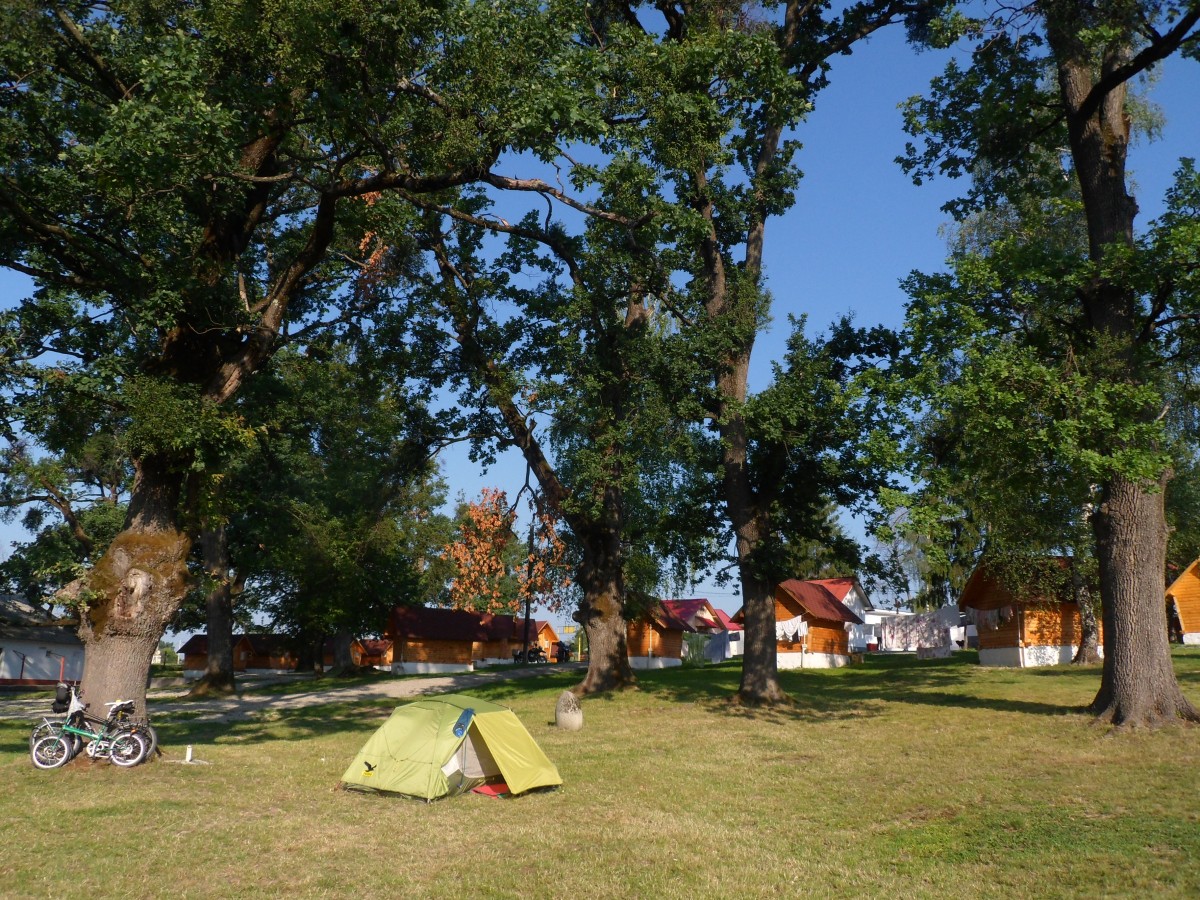
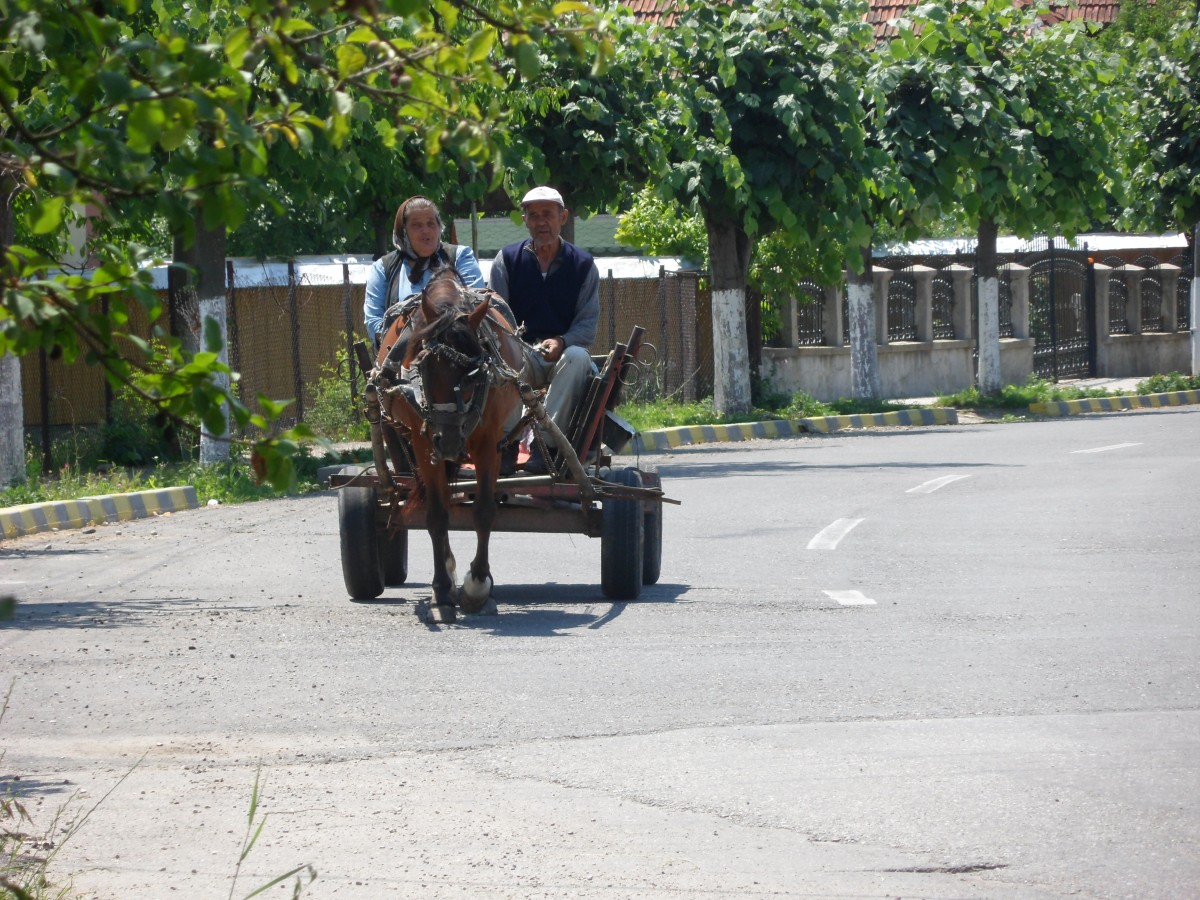
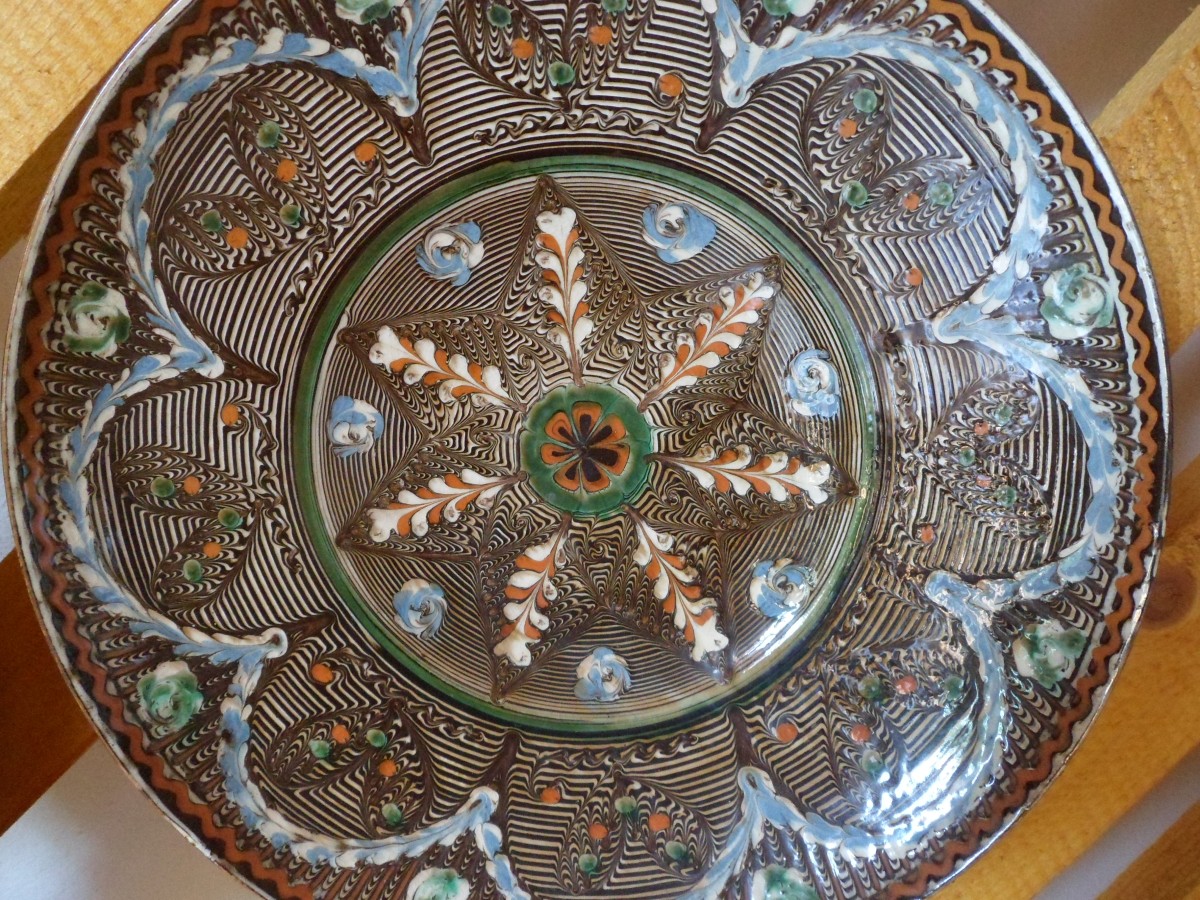

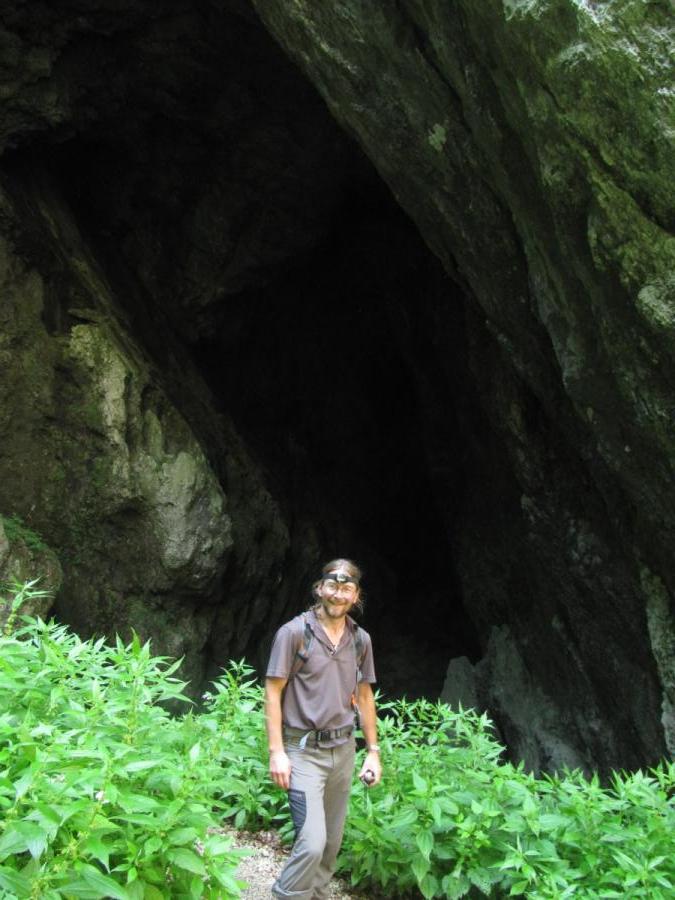
Around Horezu
Horezu has a really good tourist information. The office master tells Kathrin a lot about the famous monasteries in the area, the nearby National Park and the pottery and everything in perfect French. The hiking map provided and the encouraging words about safe camping in the National Park trigger new plans. As our man says with a big laugh, the bad guys have left Romania for Middle Europe.
We visit the beautiful Horezu monastery on the following day, and we admire the somewhat hidden pottery exhibition in the Casa de Cultura. I'm not into pottery, but the sort of fractal details of the decoration is so good that it even became UNESCO Heritage. The following day we pack our stuff and head for Bistrita in the Buila Vanturarita National Park. First we pay a visit to the monastery at the entrance of the gorge, which looks similar to the Horezu monastery. The courtyard is full of big colorful roses, and visitors in the church enthusiastically worship the displayed relics. The entrance to the cave church is locked, yet the view into the gorge already pays well for the climb.
A small gravel road takes us into the Bistrita gorge. Limestone walls of 200 meters height are divided by a small river, at some point just 6 meters wide. On the way, we visit the Pestera Ursilor (bear cave) with its 60 meter high and 30 meter wide entrance, that quickly narrows to gap just big enough for one person. Utter darkness in here, and the sound of bats!
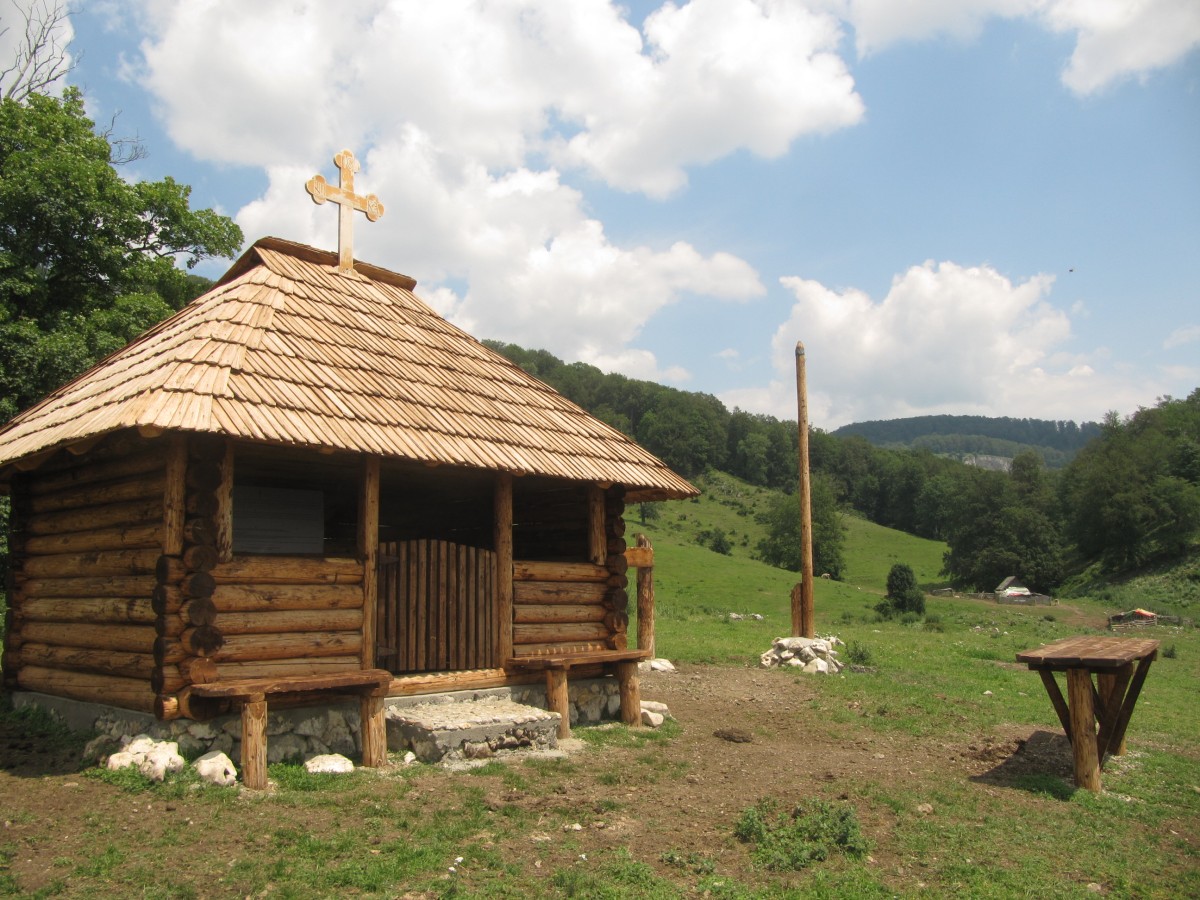
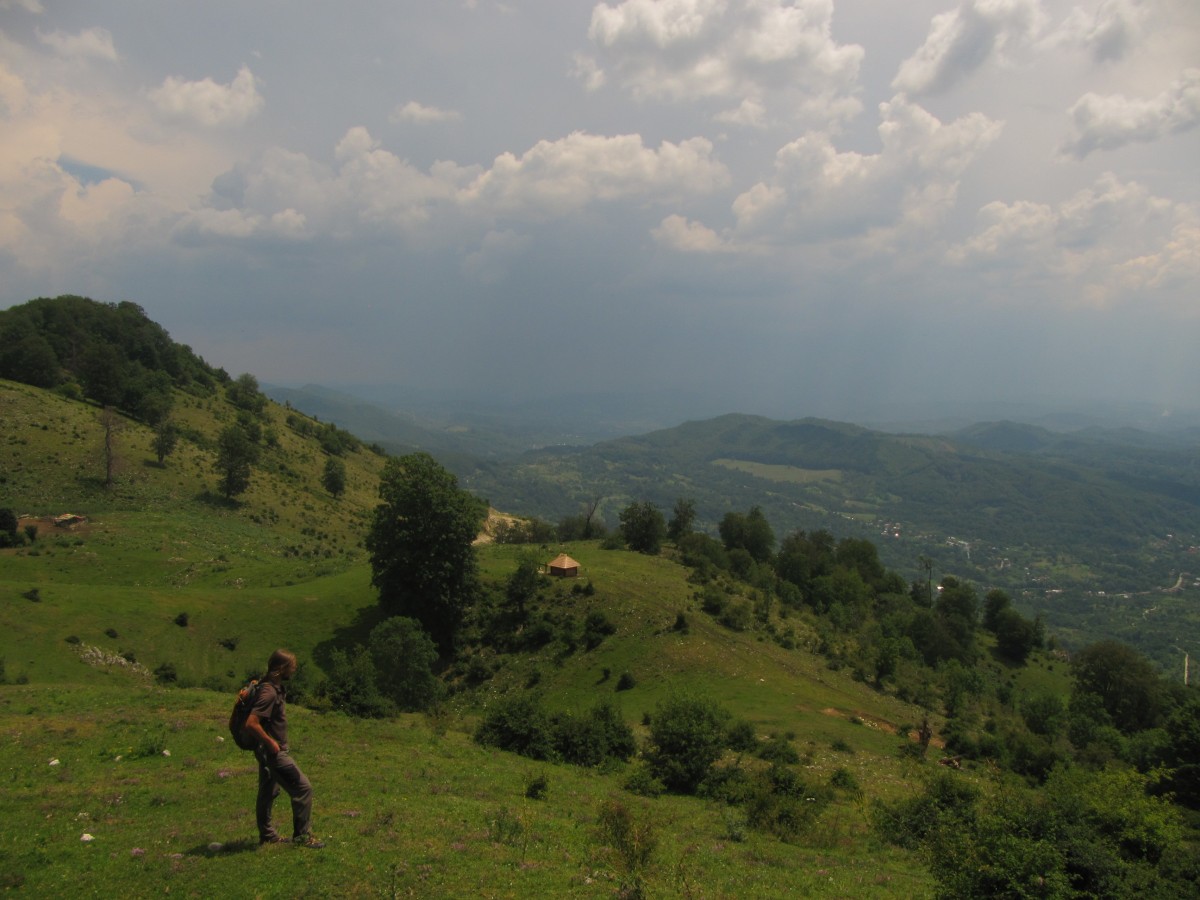
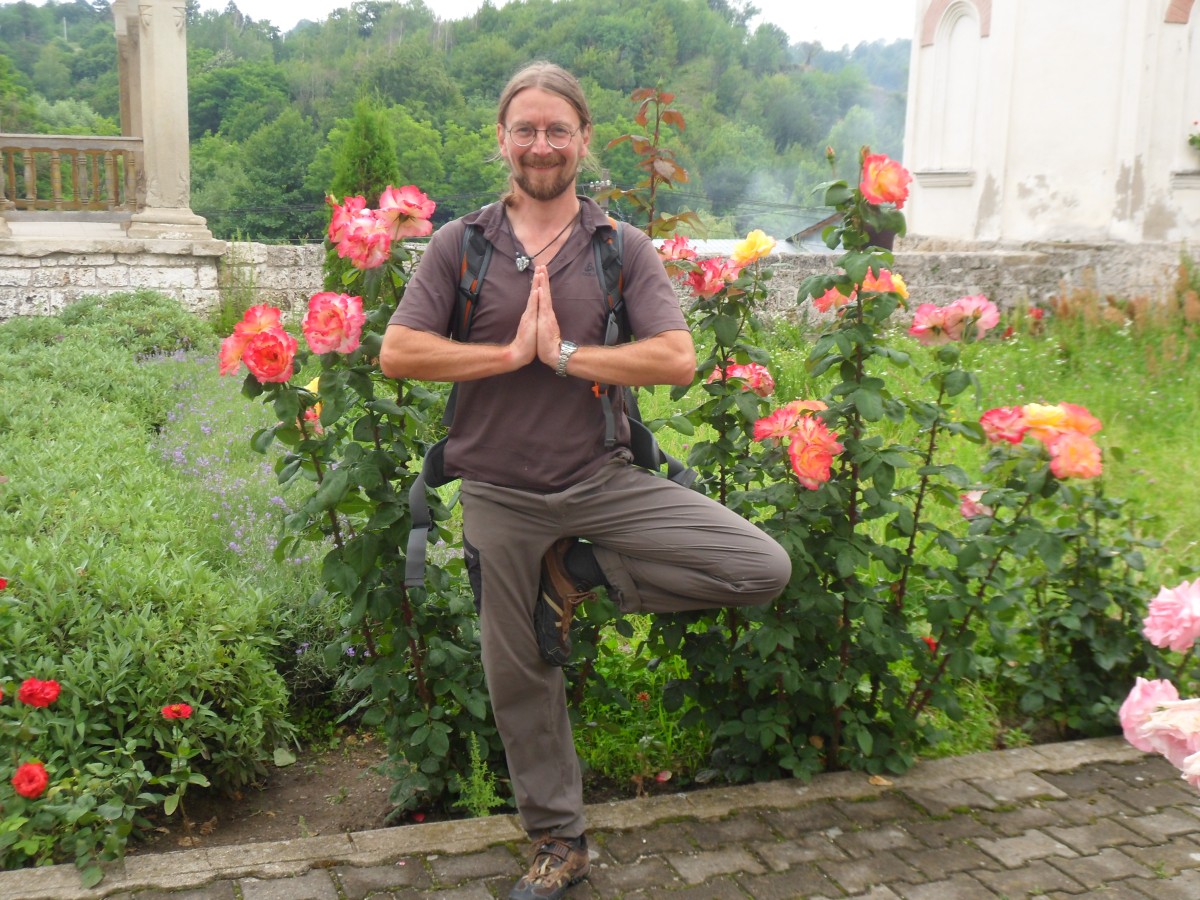
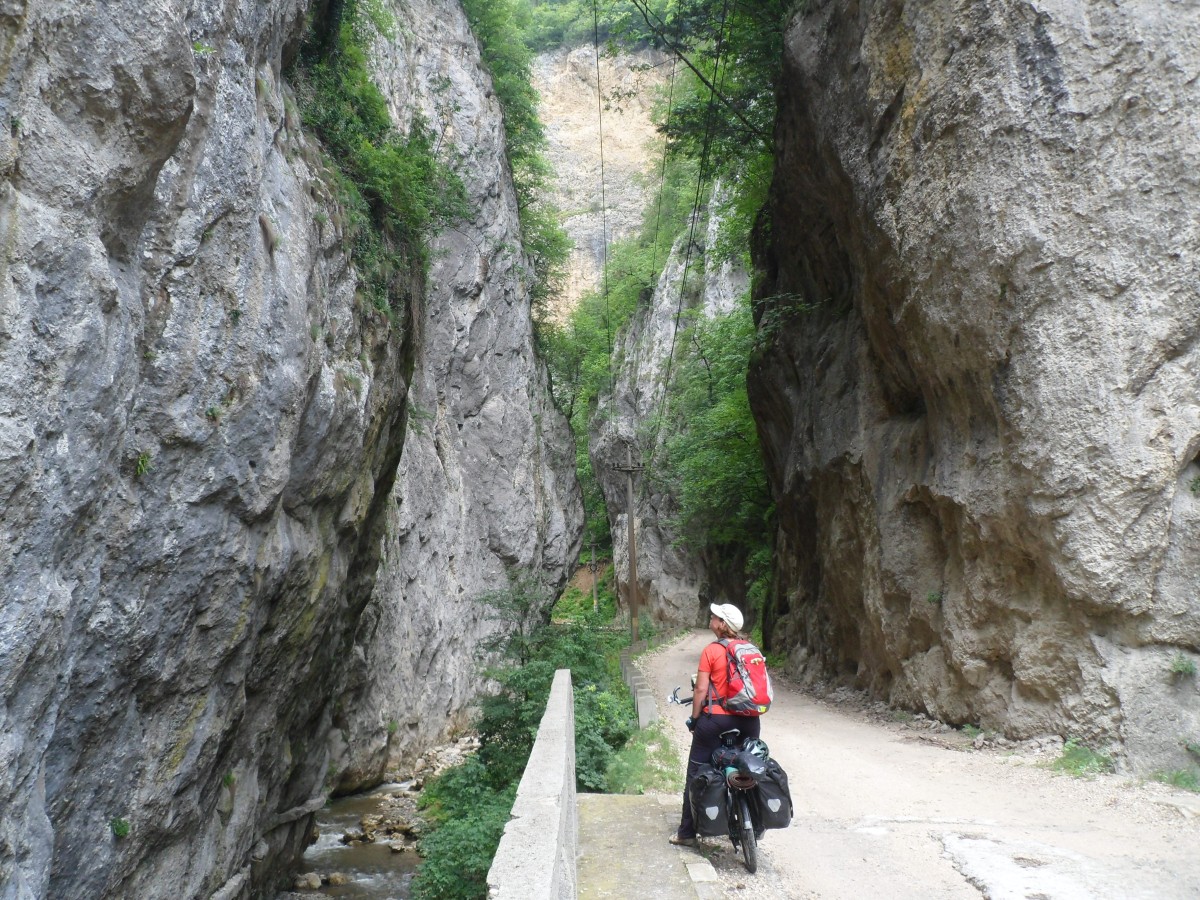
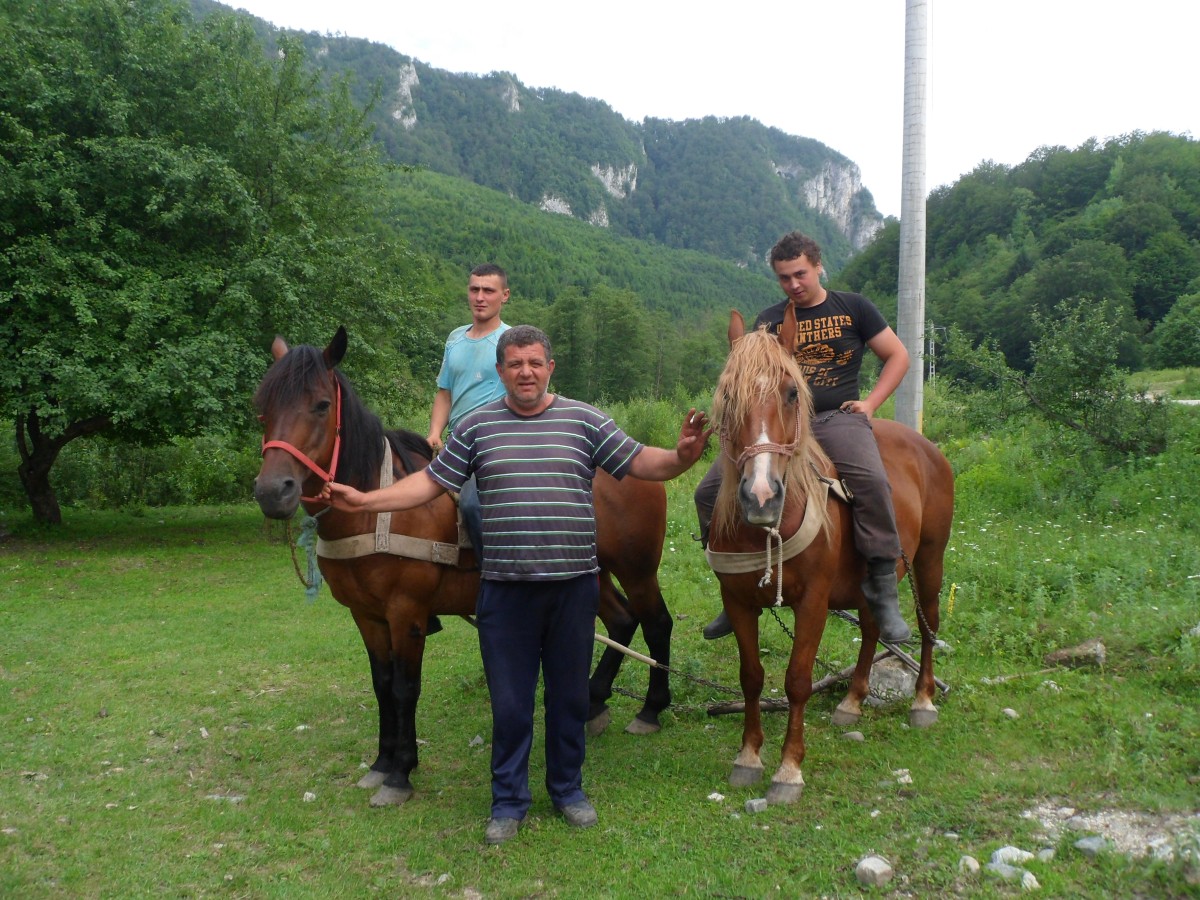
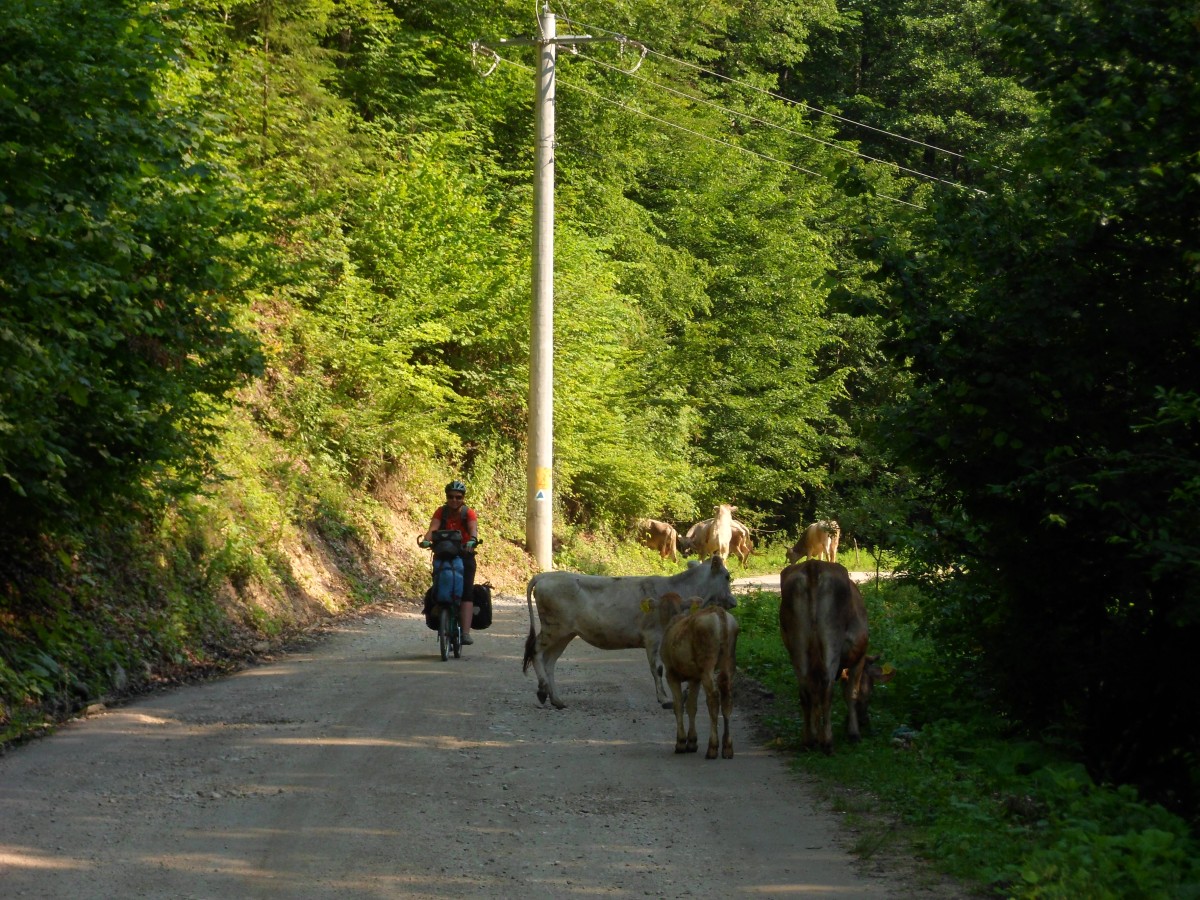
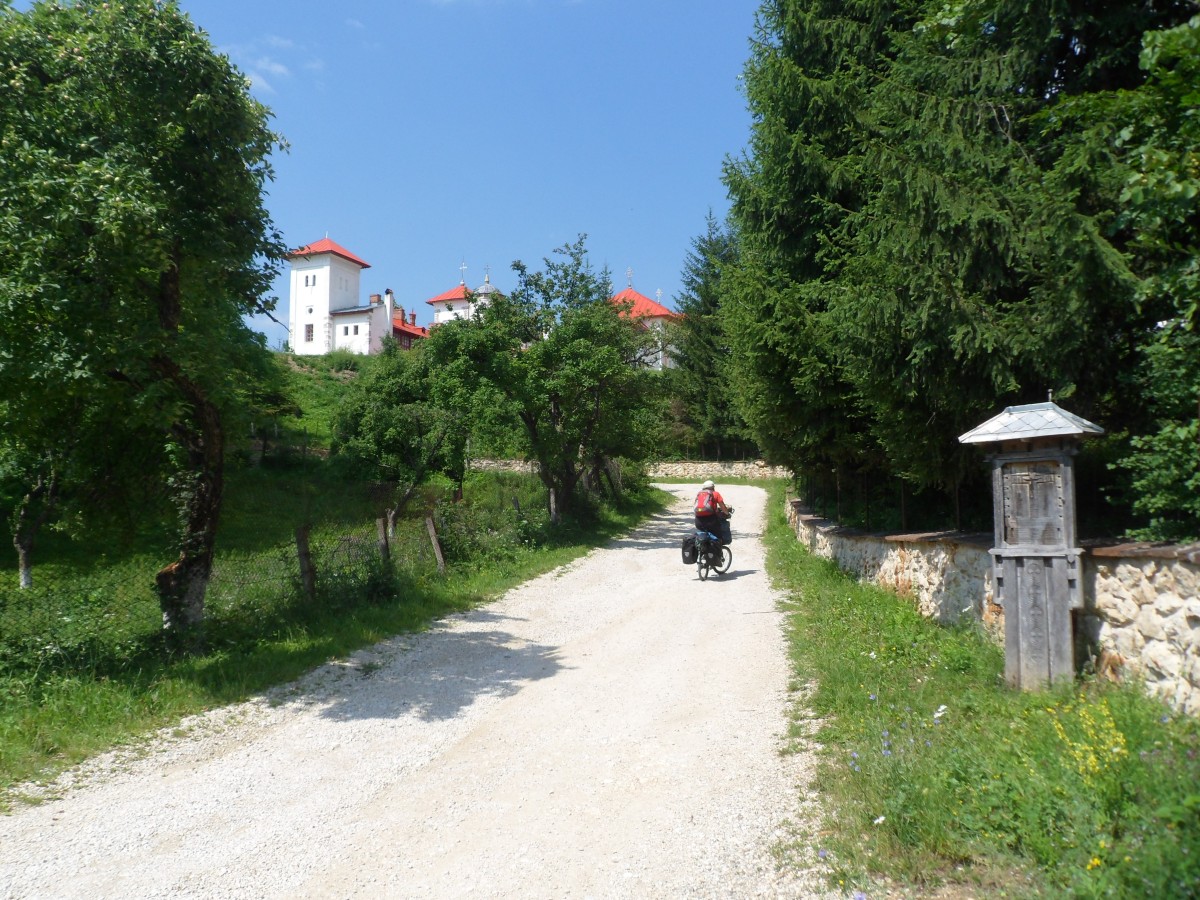
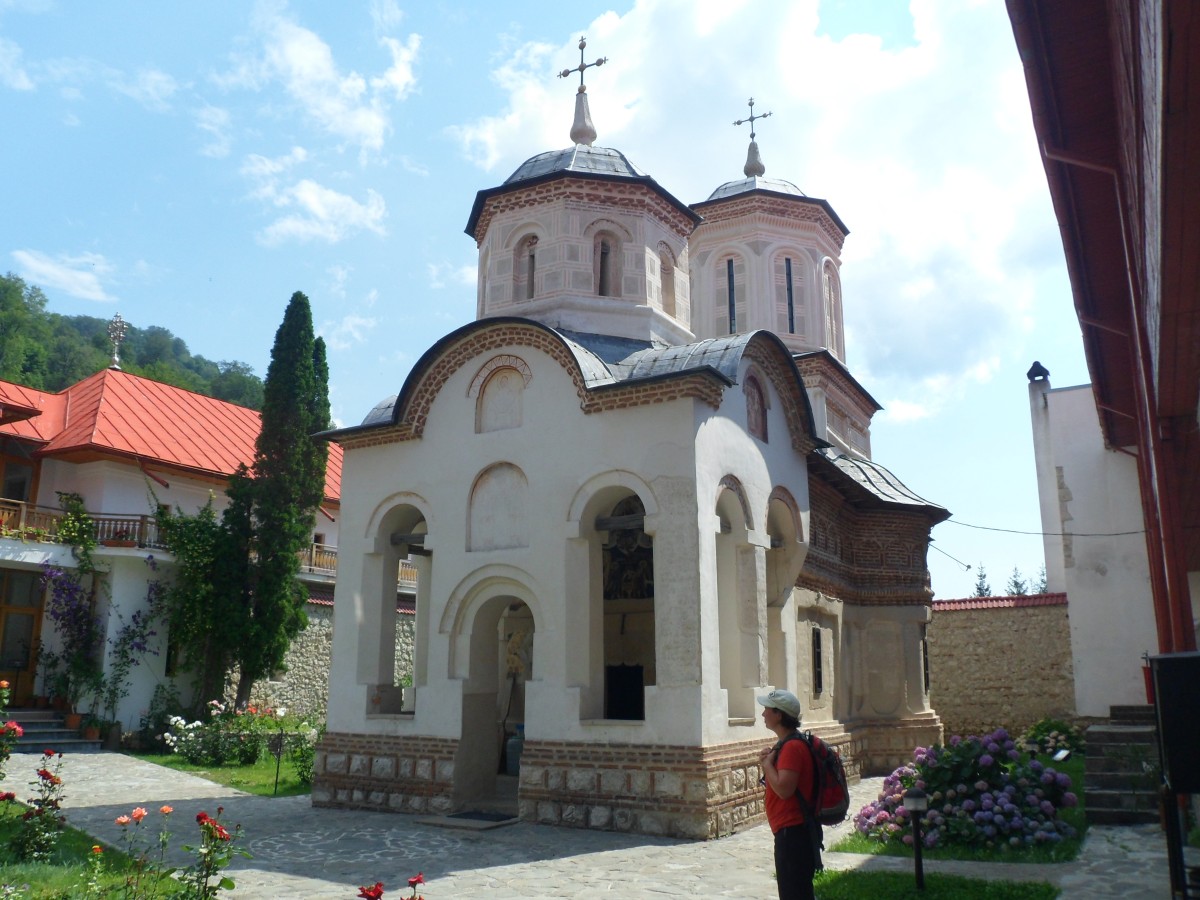
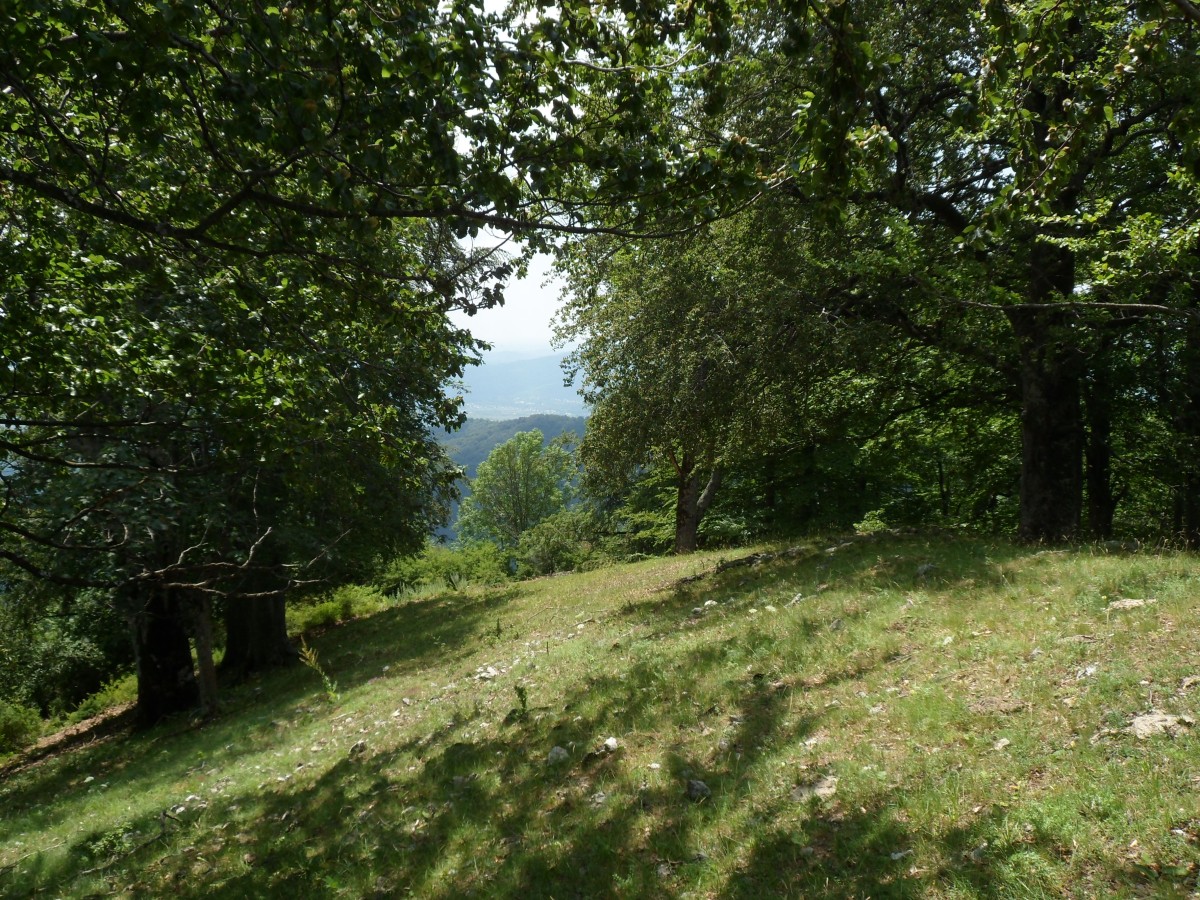
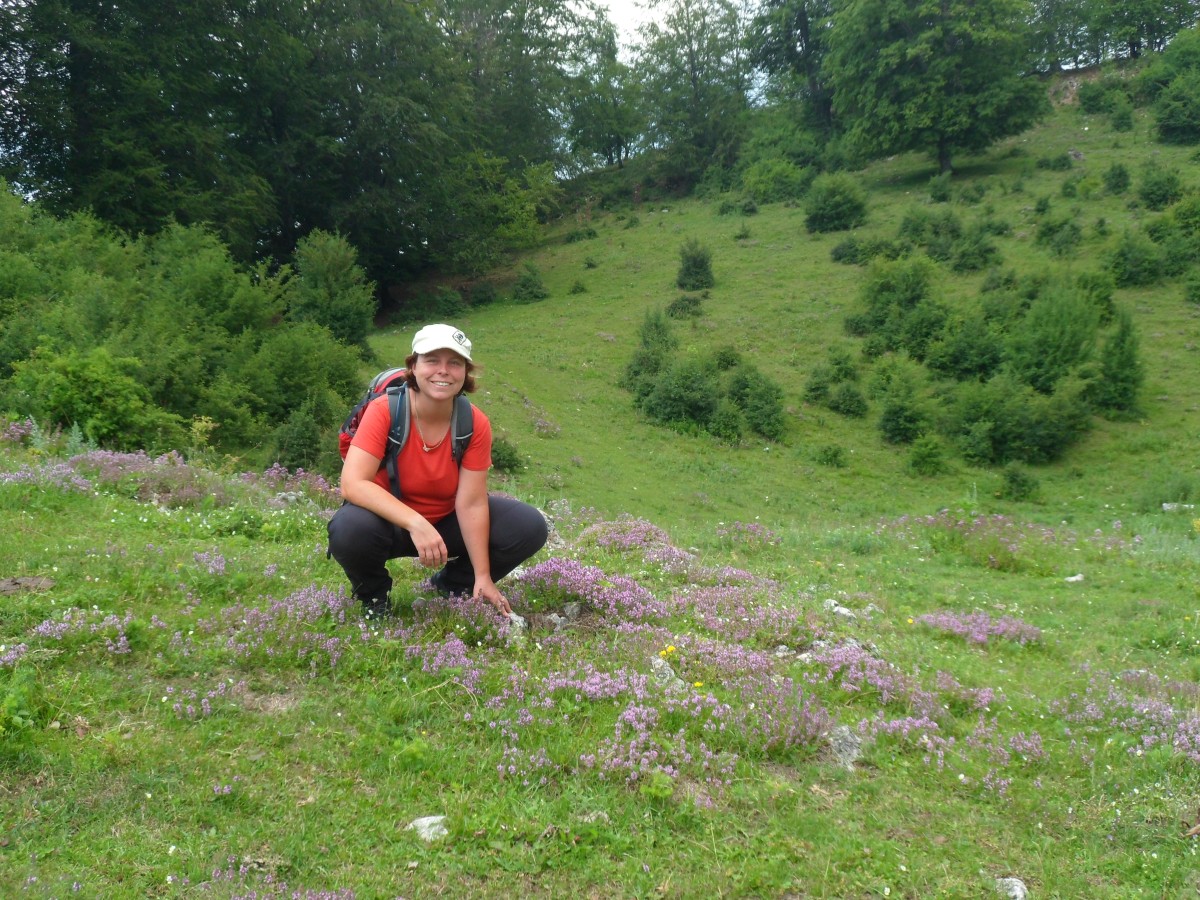
The campground we find after a few kilometers is an excellent spot. White limestone ridges tower above the forest. Nearby the river rustles. A carpenter shows up with two apprentices and two strong horses. He accepts our invitation for a coffee, while his boys and the horses pull a dozen of trunks from the other side of the river. We don't have a real language in common, but somehow we manage to learn a bit from each other. So we learn about the spring half a kilometer up the valley, and a small bear that hangs out around here. Loru (or Laurentiu) is a carpenter from a neighboring village. He worked on a farm in Germany for a few weeks a while ago and he is so curious about our trip that he watches and comments every photo on my camera. Perhaps he just liked to sit and rest. Just, he didn't really bother to talk to Kathrin. Perhaps, attitude already changes as we get closer to the Orient. At nightfall there are dozen of fireflies around us. And little later some rain to ease us into deep sleep. No bears, luckily.
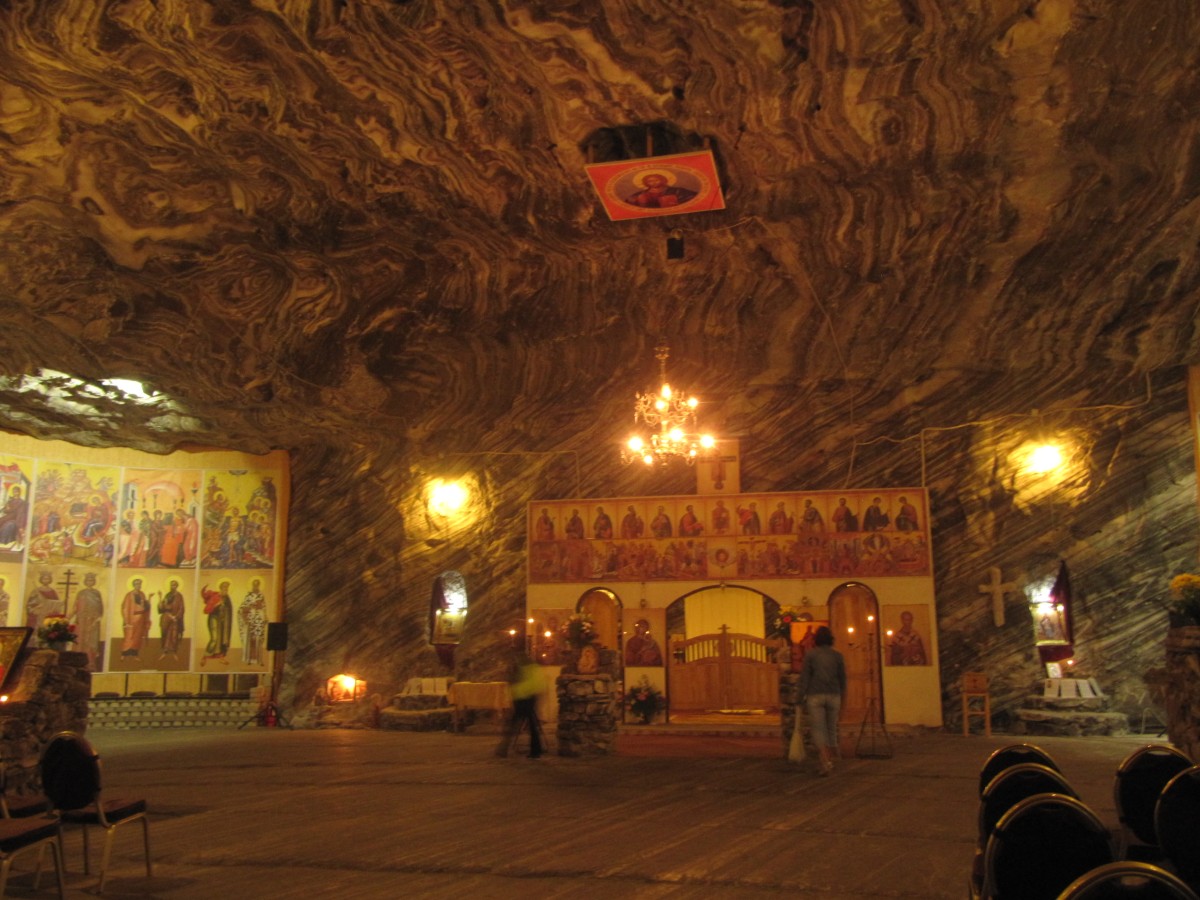

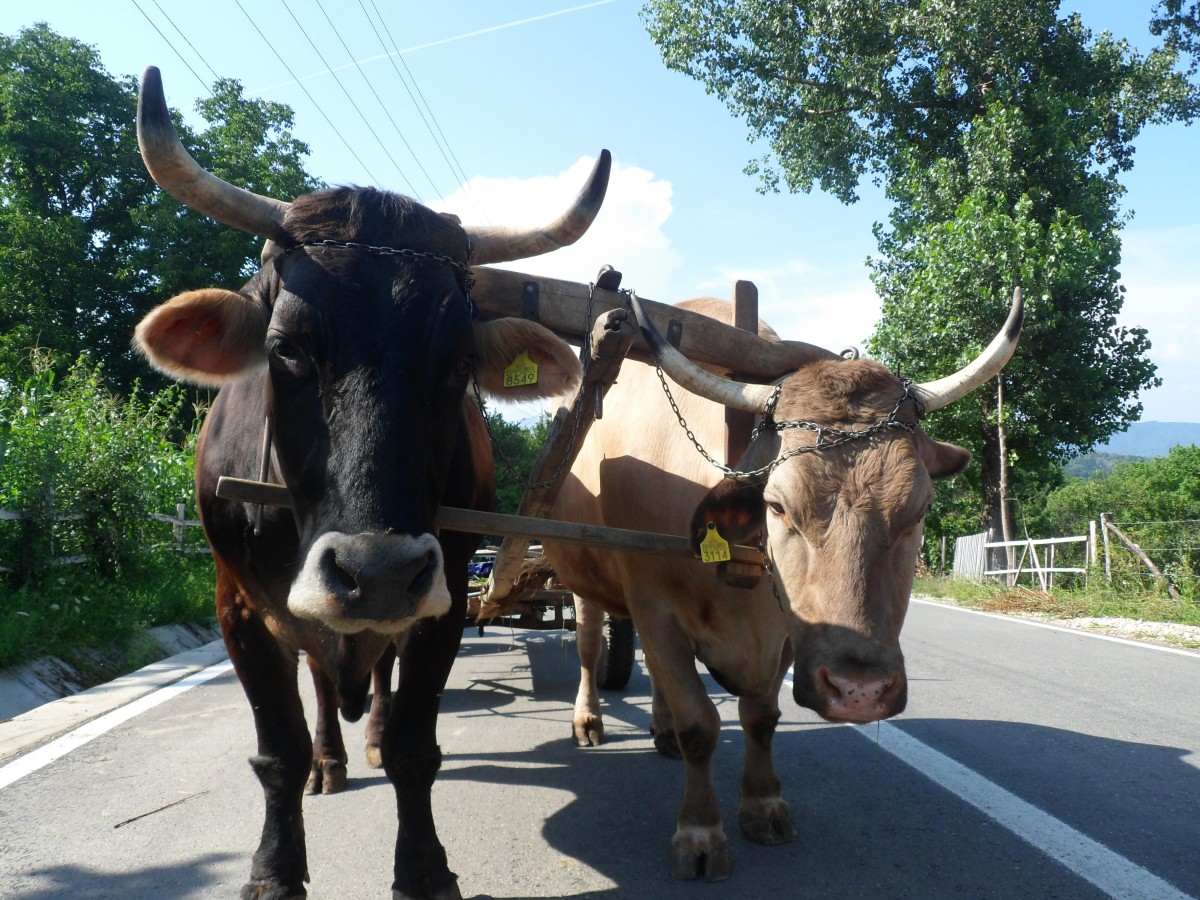
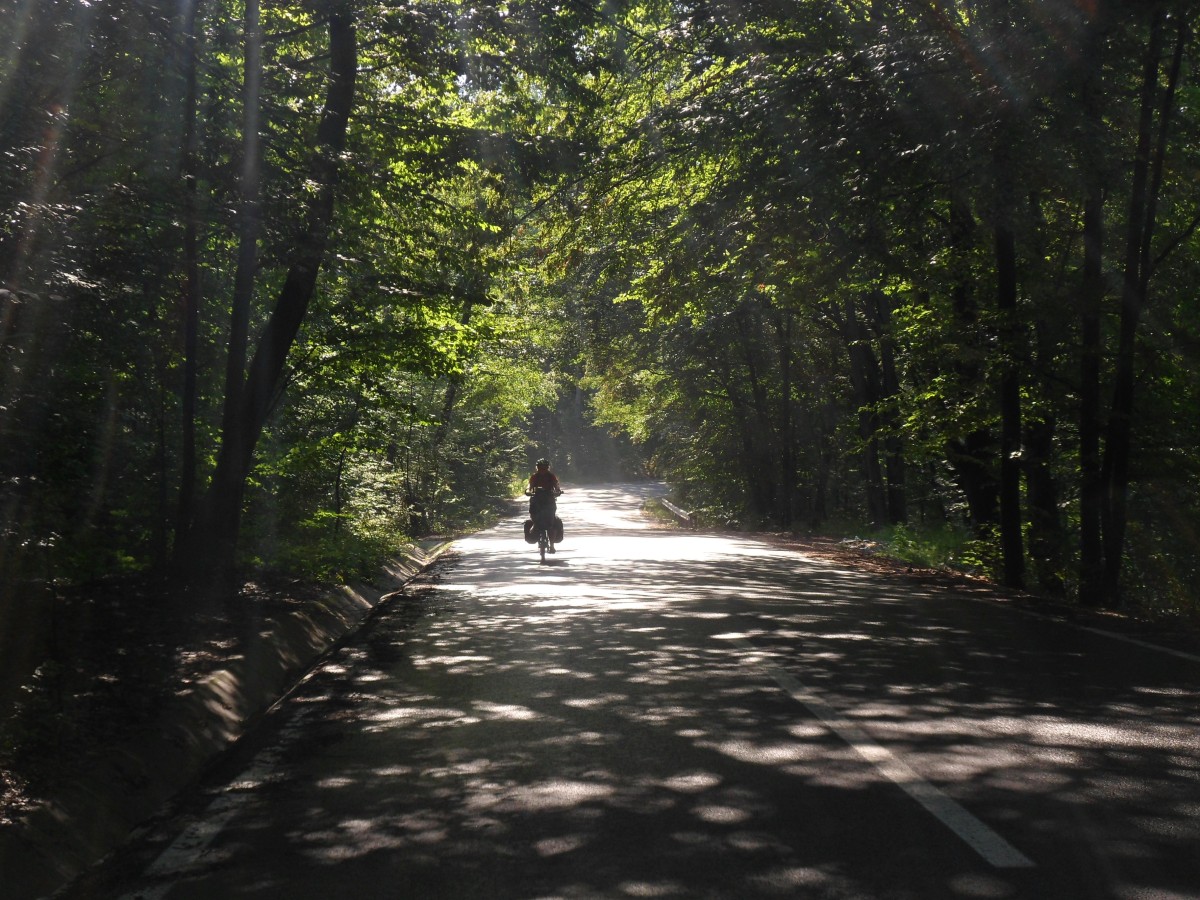
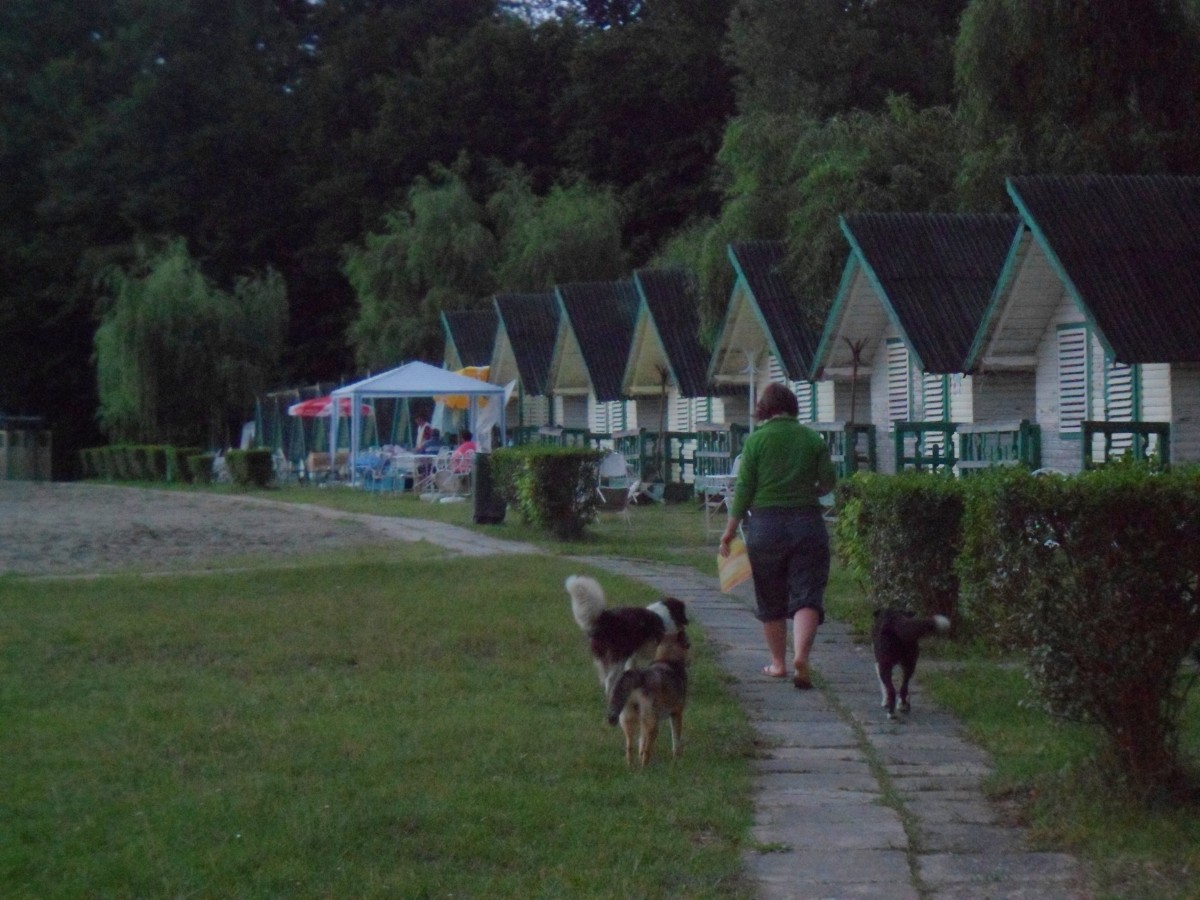

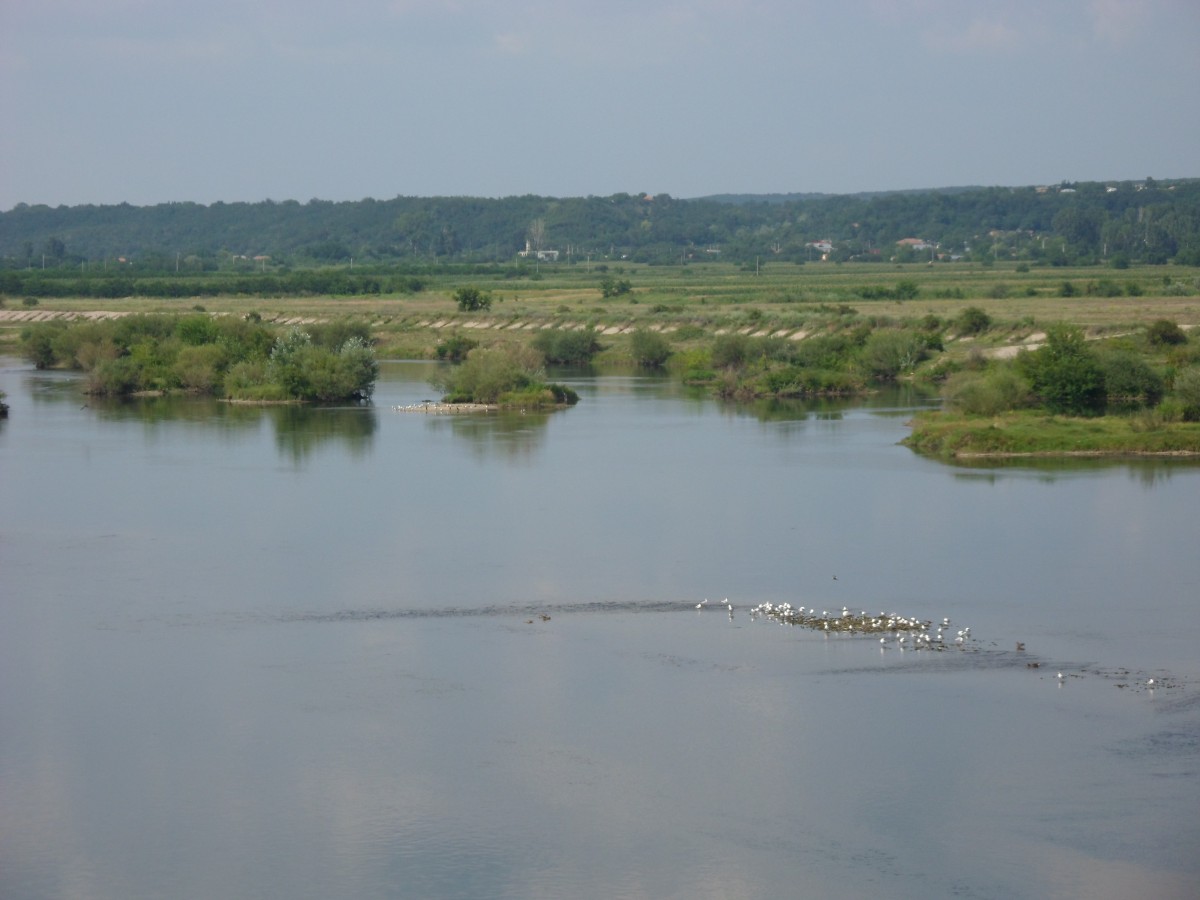
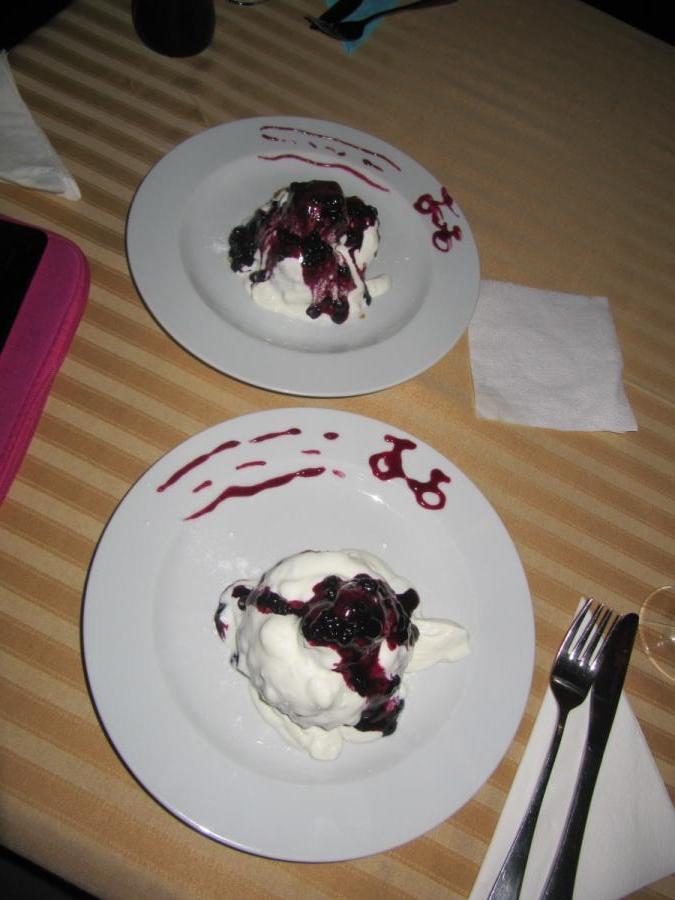
From the Bistrita monastery there is a steep 5 kilometer gravel road to the Arnota monastery, with accommodation facilities and hiking trails on the mountains. This might be our last chance to hike for a while and since I don't like to leave our stuff in the village, we cycle up the painful road. The third monastery in three days – that's almost a pilgrimage! With my non-existent Romanian skills and desolate Bible knowledge, I watch the chapels paintings with little more understanding that an ant. However, the hike almost up to Mount Arnota was very pleasant in a Buddhist way. I really liked the gnarling trees and the view of the surrounding hills and black thunderstorm clouds.
After the hike, we hop on our bikes again and cycle to Baile Gorova, a traditional spa town with a campground. The campground actually consists of wooden huts, tenting isn't allowed and the pool would shimmer in rainbow colors. Sunday morning, 8:30. Disco starts, or rather radio music distributed evenly over the camp. About 5 different songs were played during the course of the day. My flash for Romania gets chilled somewhat. However, we stay for two nights to recover our bums before moving on to Draganesti. Two nights in a decent pension with WiFi. The cook paints bicycles on our plates, with blueberry jam! Busy planning the next adventures – Bulgaria is just 120 kilometers away.
This last stretch on minor roads to Turnul Magurele is once again an amazing experience. Sunflower fields in full bloom are followed by long stretches of old farm houses. Horse and donkey carts rather than cars. Older villagers sit in the shadow under the plum trees, observe their gooses and turkeys and protect the plum harvest. Rarely we find a tree to harvest some plums ourselves.
By 5PM, some unattended goose flocks cross the street, one after another, observed by the gander. Lovely Romania!